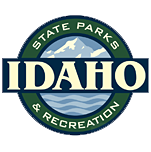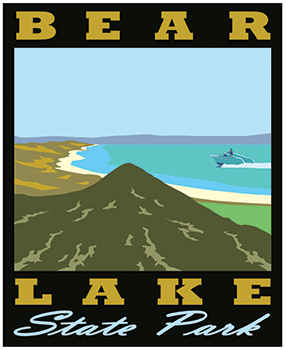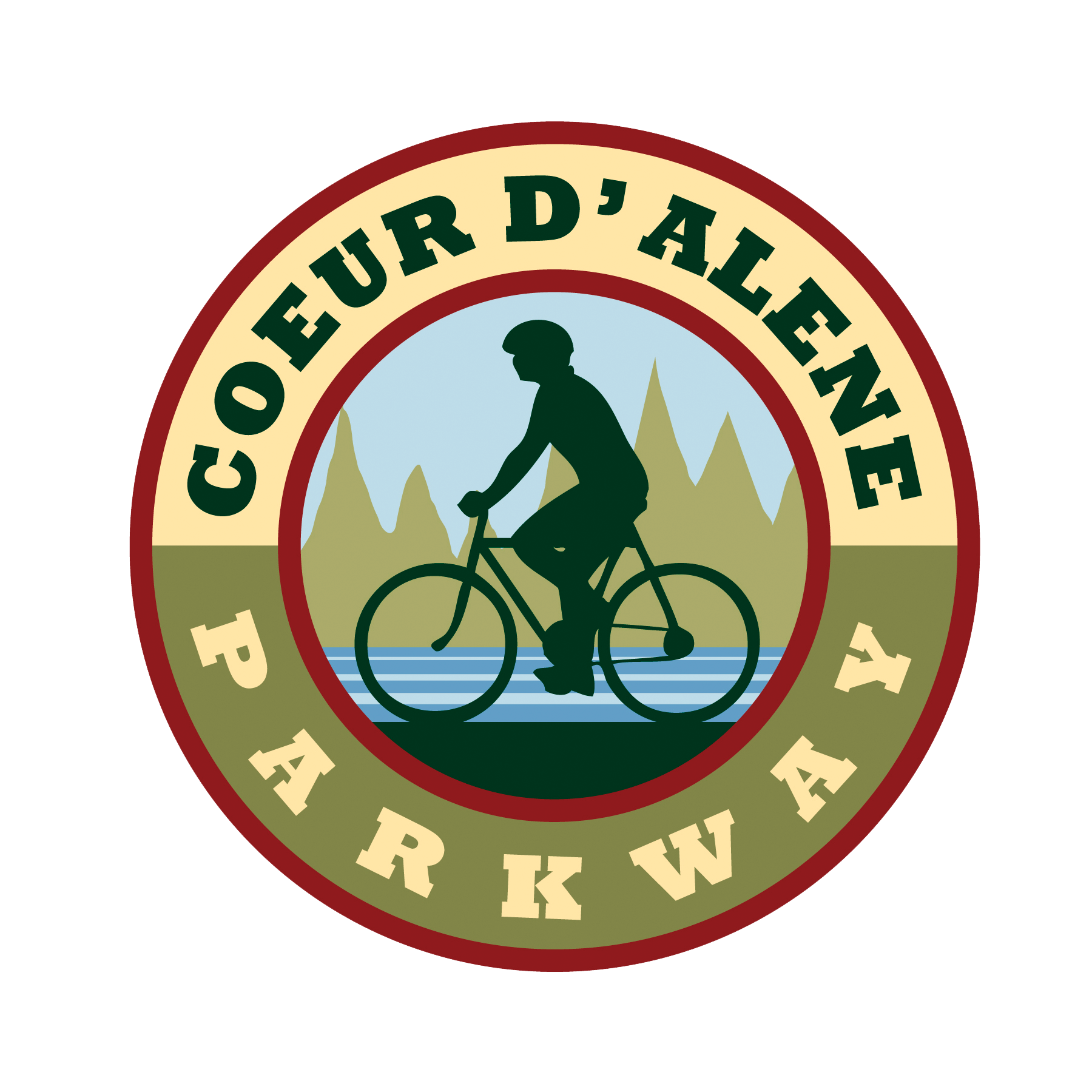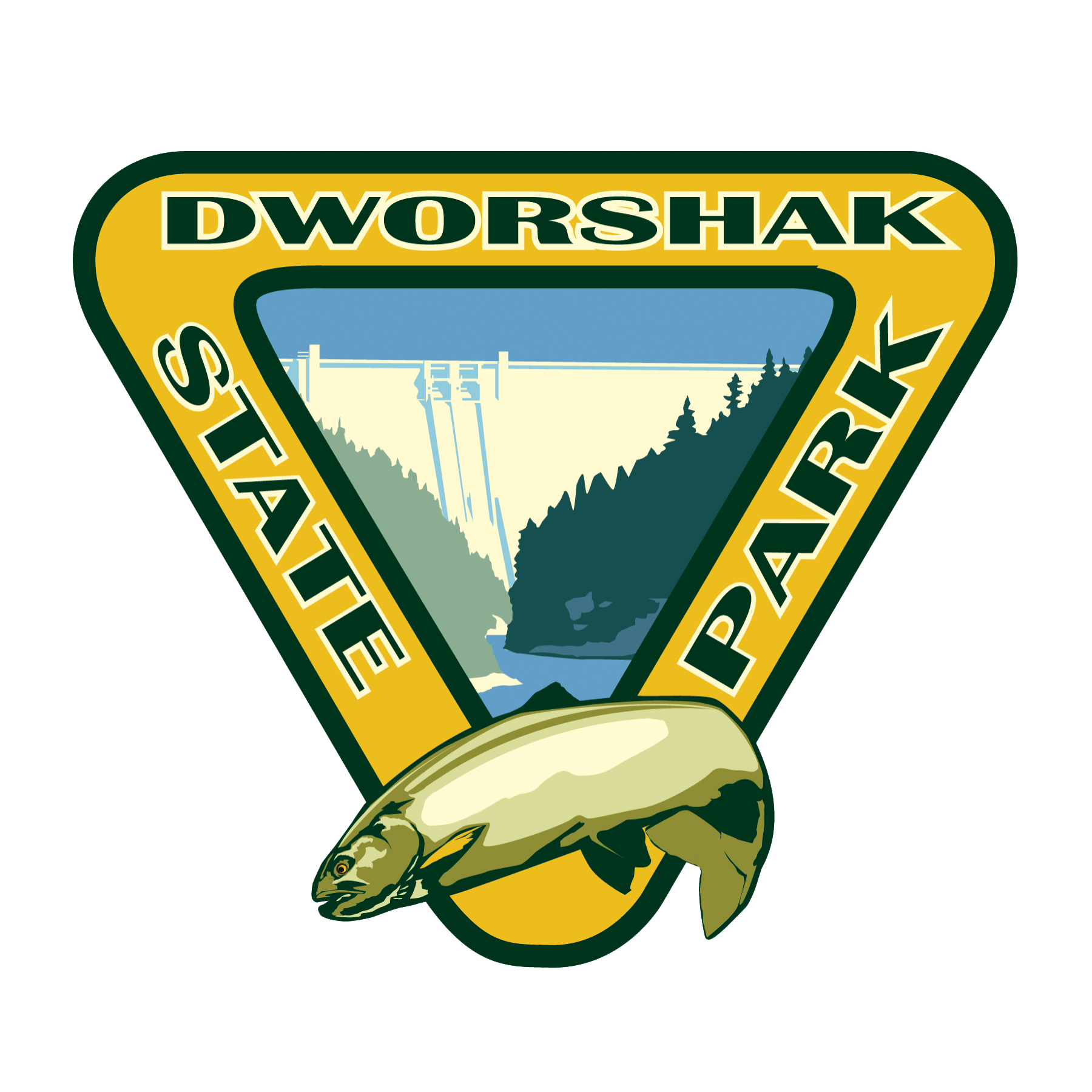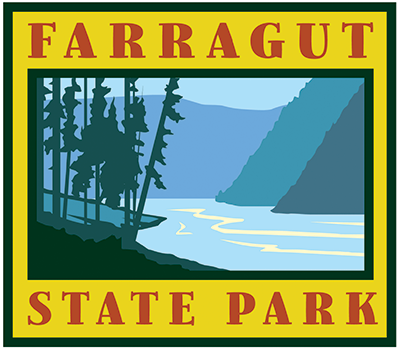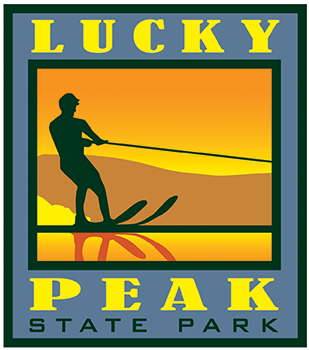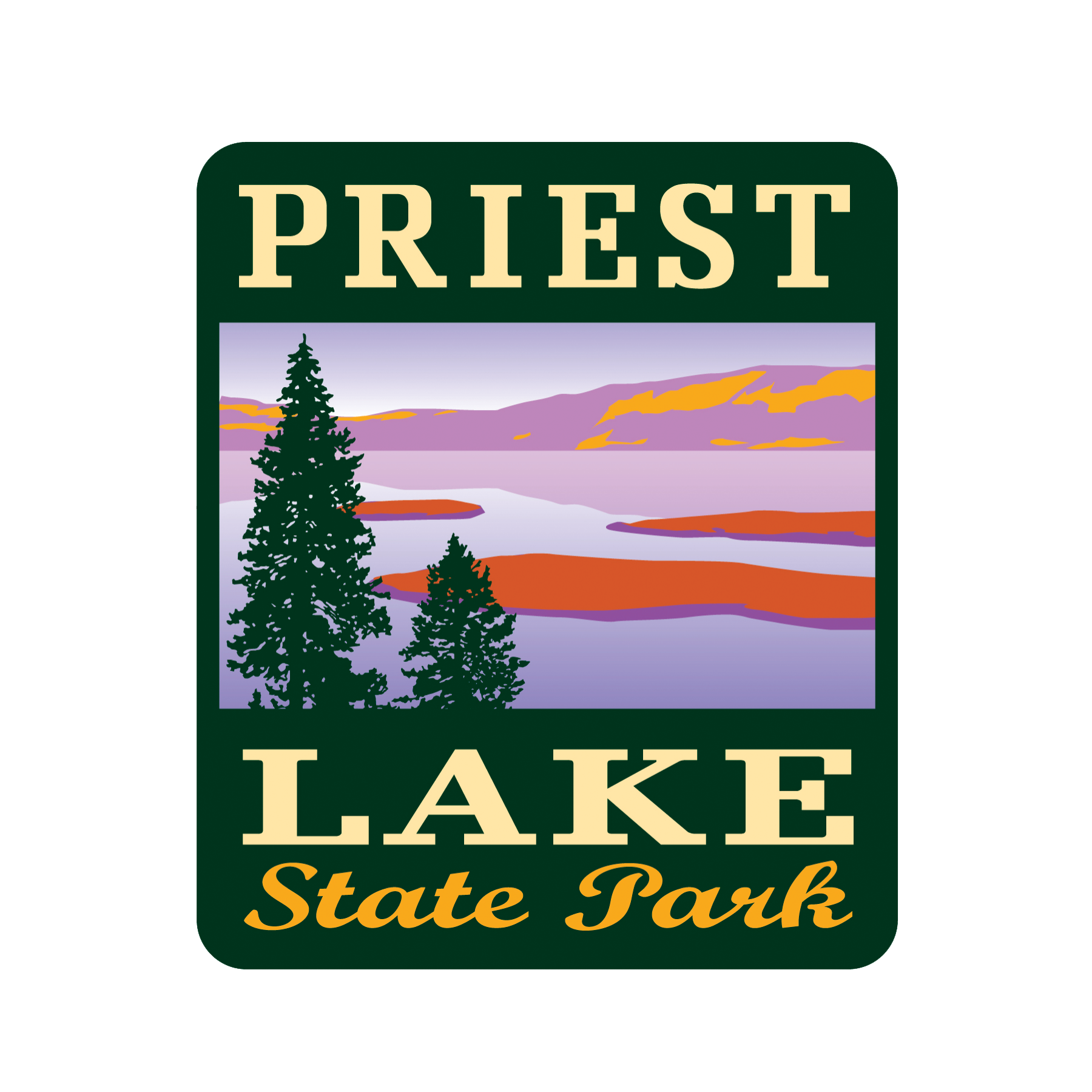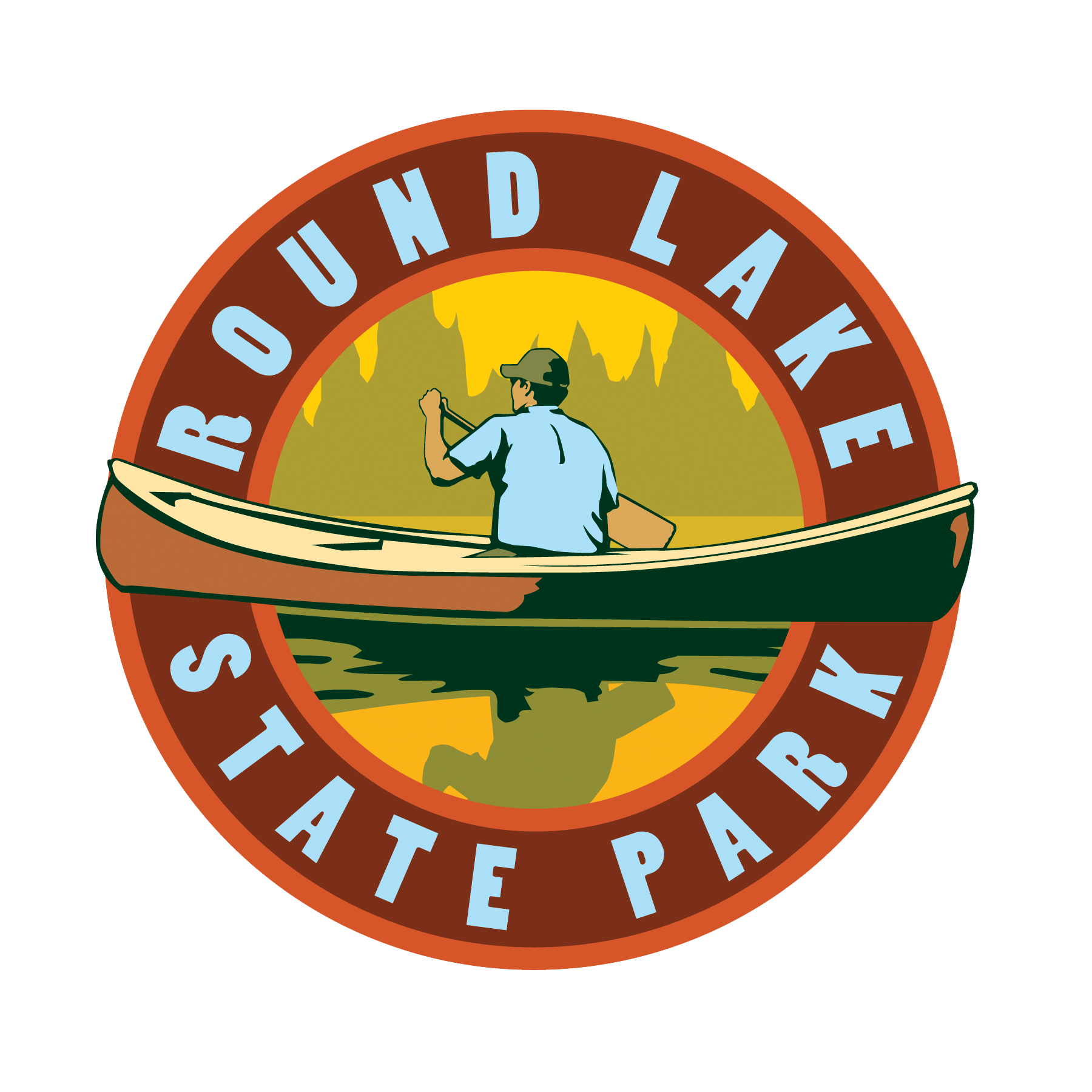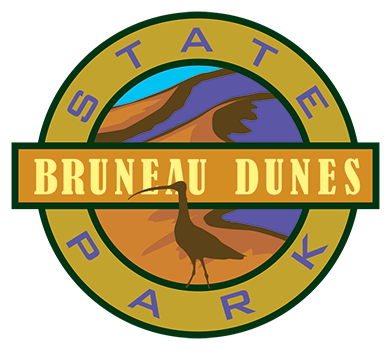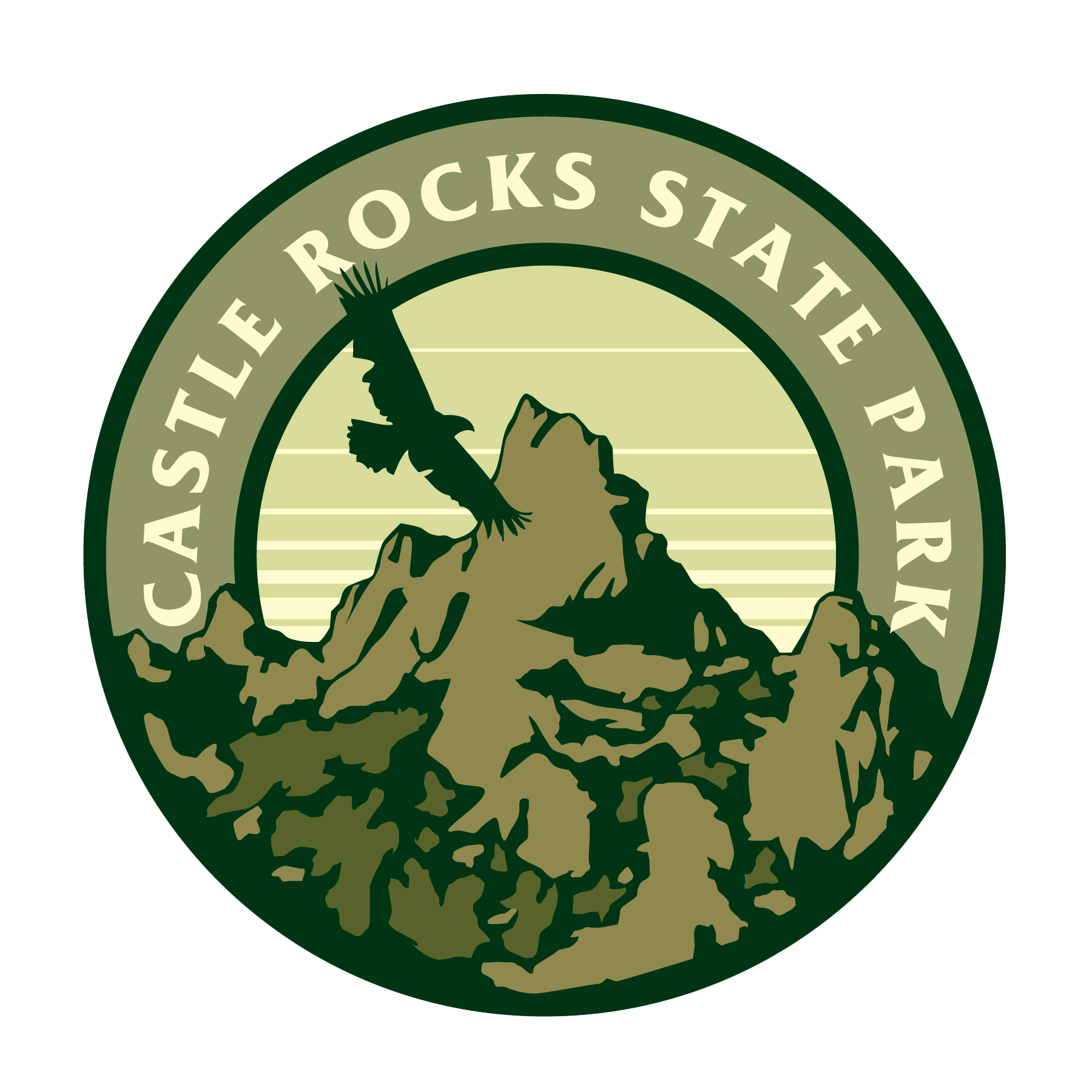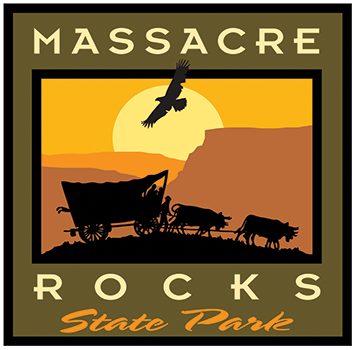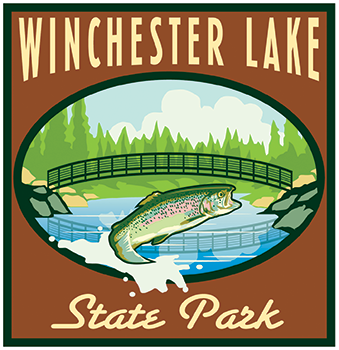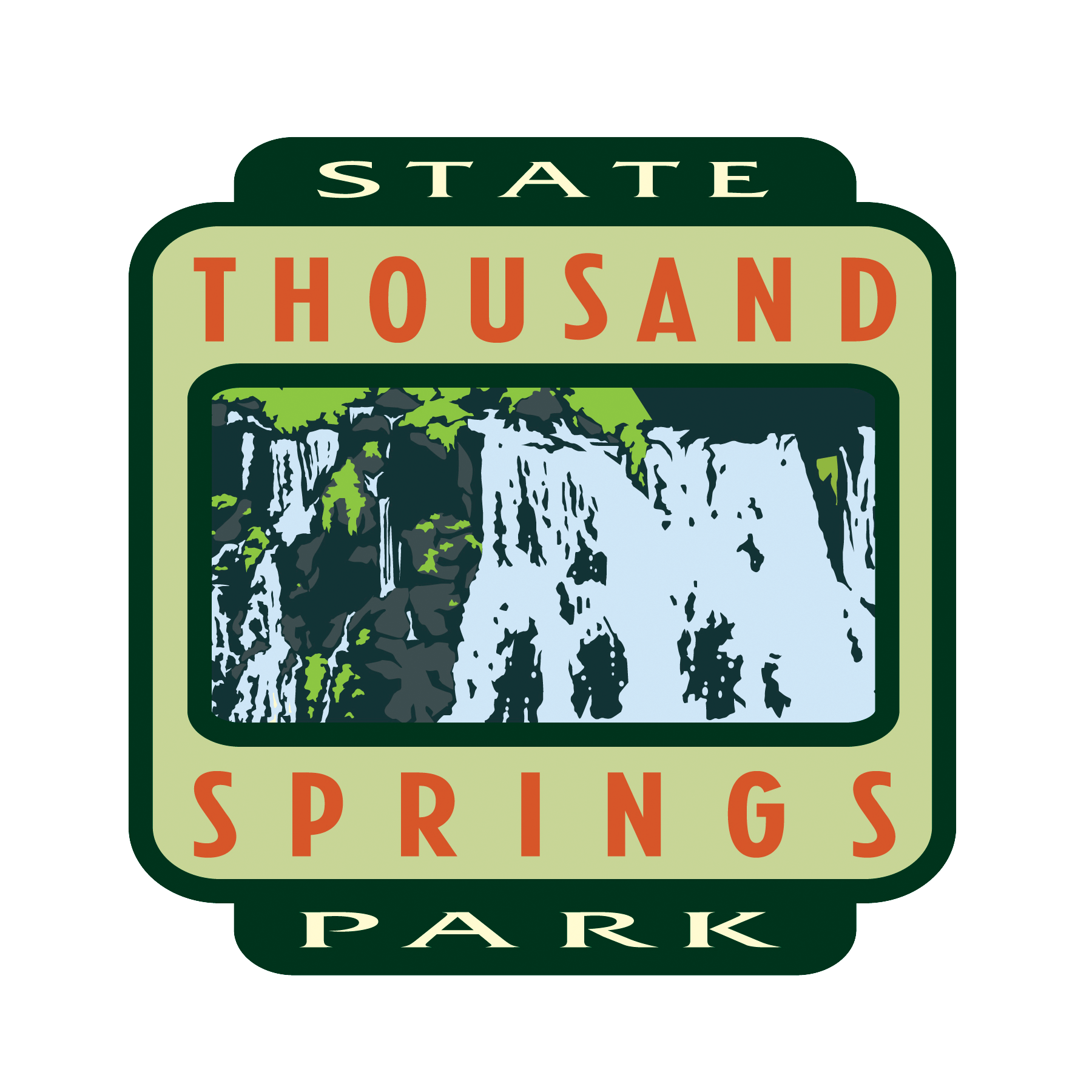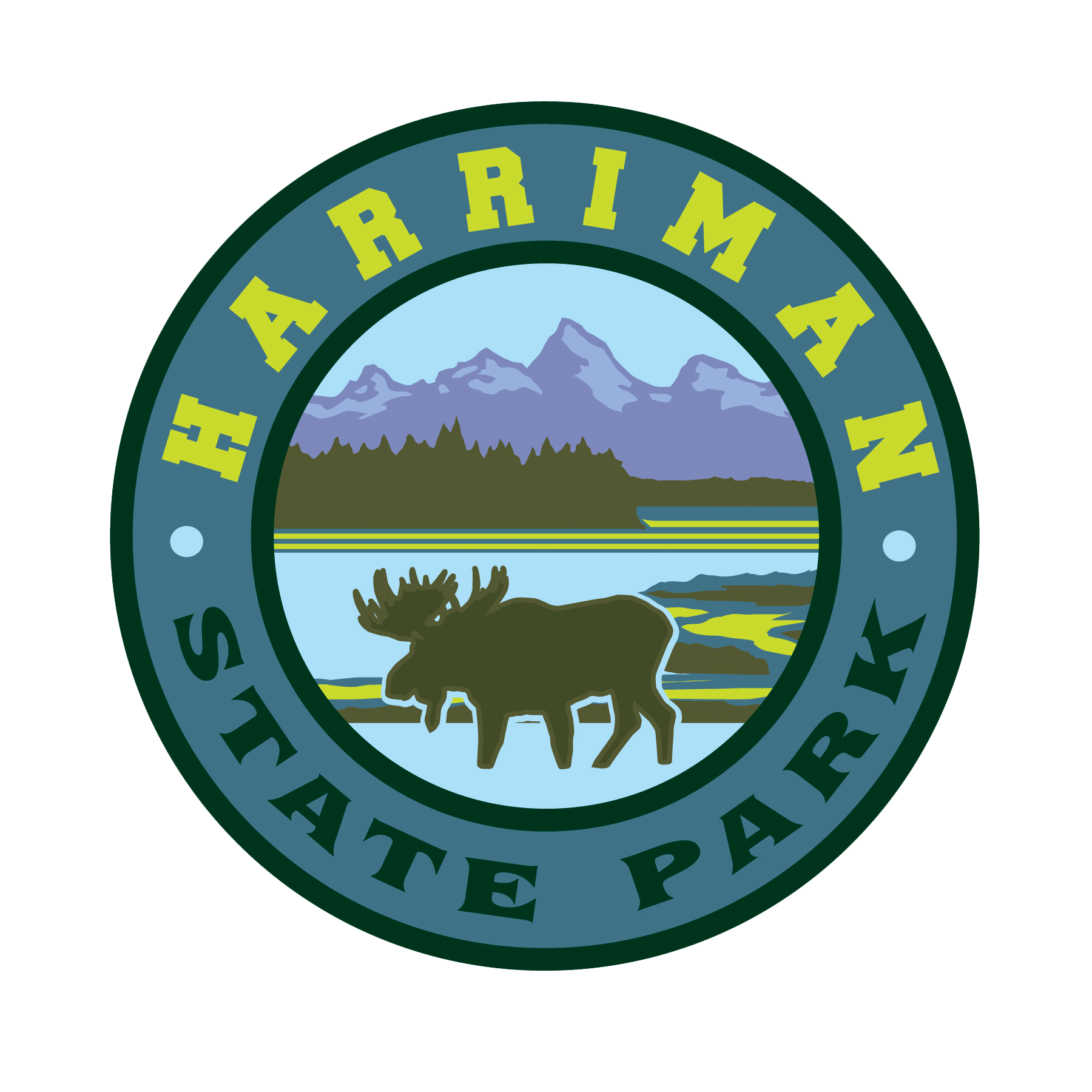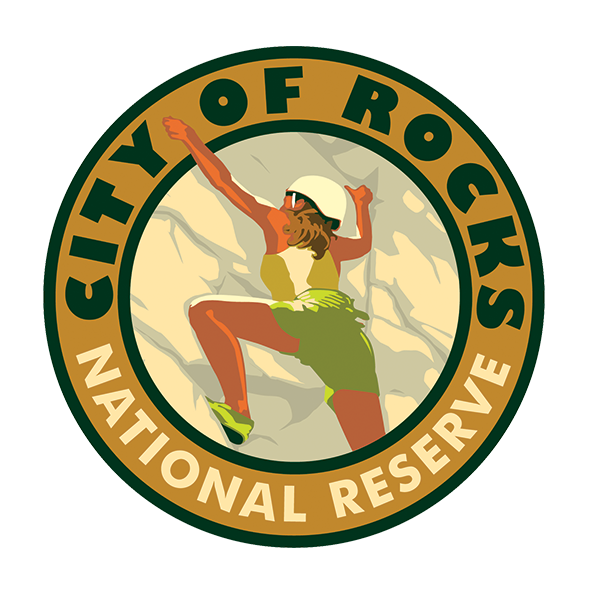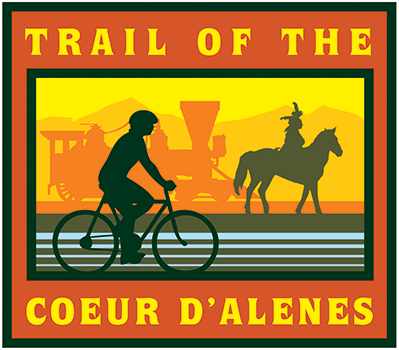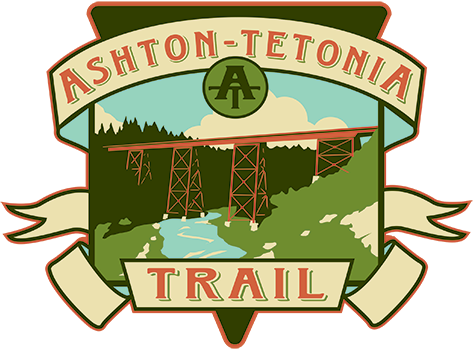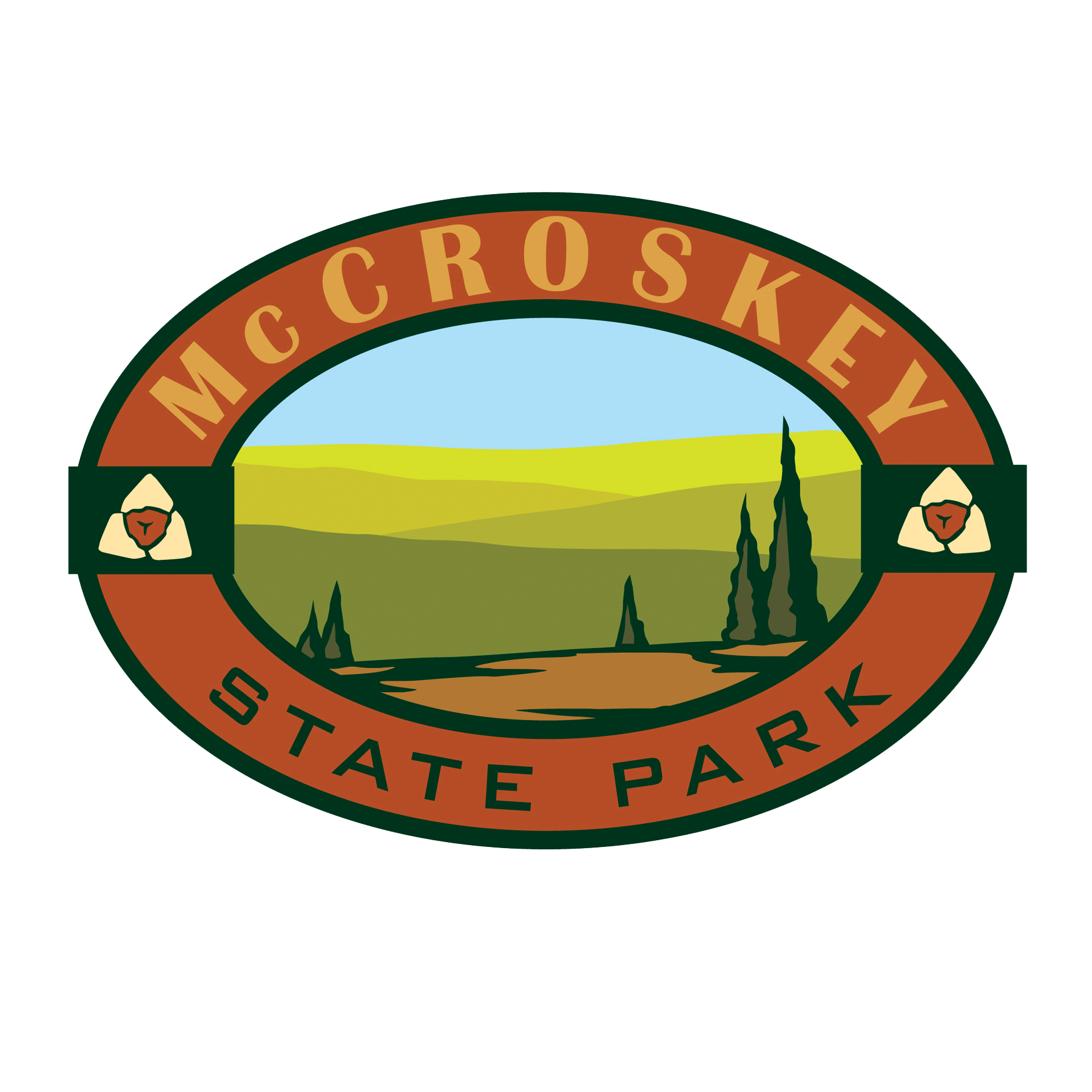Sailing
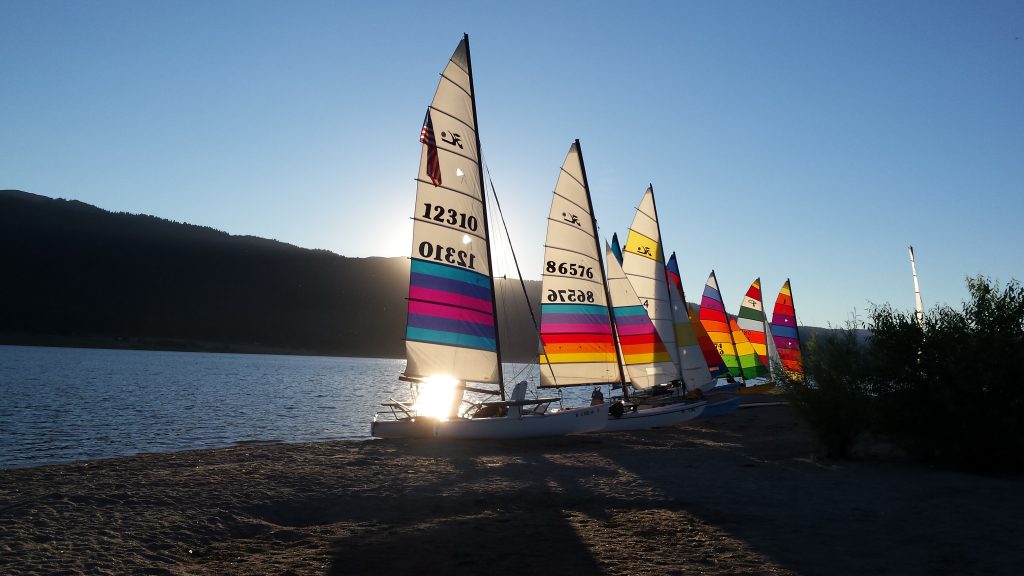
Sailing
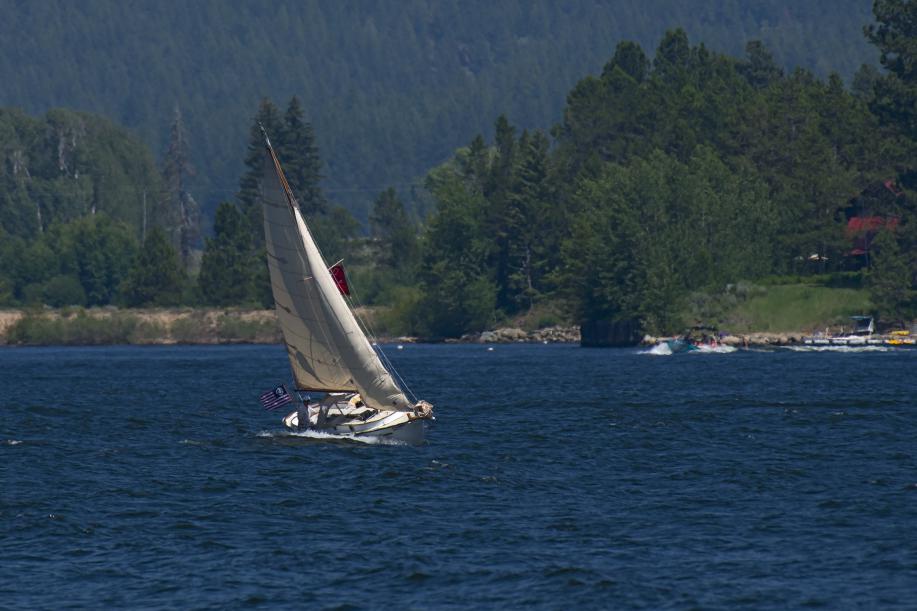
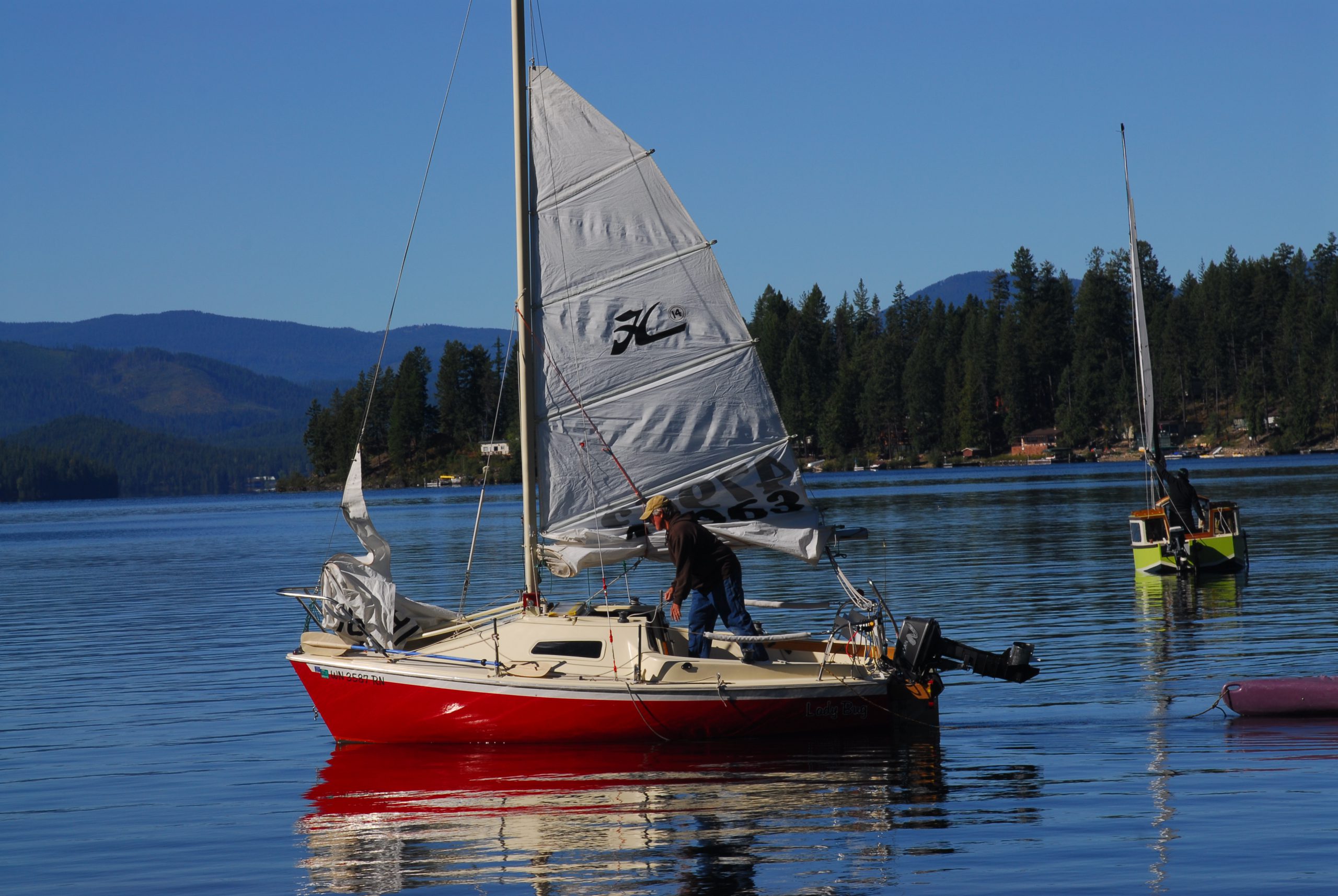
Sailing Safety Tips
- Stay off the water during storms or periods of high winds.
- Carry a flashlight in case you remain on the water after dark. Shine the light on a sail to warn approaching vessels of your presence if you have no navigation lights or if another vessel does not see your navigation lights.
- Remember that sailboats with an engine must have the red, green, and white navigation lights.
- Remember that the mast can be a conductor for lightning. Be aware of masthead clearance when passing under power lines and bridges.
Learn more tips and take the online safety course at Boat-Ed.com.
Invasive Species Program
Invasive Species Sticker Assistance: 1-888-922-6743 (M-F 8am to 7pm MST)
Idaho’s Invasive Species Law
Idaho law states that any motorized or non-motorized boat operating in Idaho is required to display an Invasive Species Fund (ISF) sticker. When you purchase and display an ISF sticker, you contribute to a fund that provides vessel inspections, washing stations and informational materials that will assist Idaho with preventing the introduction of aquatic invasive species like quagga mussels.
WHAT VESSELS NEED TO HAVE THE STICKER?
- Any watercraft coming in from out of state that is not registered in the state of Idaho.
- Any watercraft including, but not limited to; boats, canoes, kayaks, stand up paddleboards, rafts, etc.
- Registered watercraft in the state of Idaho have the invasive species sticker included in the registration. The invasive species sticker must be visible on watercraft.
WHAT VESSELS ARE EXEMPT FROM PURCHASING THE STICKER?
To be exempt, watercraft need to meet ALL of the following criteria:
- Less than 10ft in length.
- Non-motorized.
- Inflatable.
For Frequently Asked Questions and other information about the Invasive Species Program, please visit the Idaho State Department of Agriculture.
Purchase Invasive Species Fund Stickers
Boaters can purchase ISF stickers online, at any Idaho State Park or at specific vendors.
Invasive species are harmful, non-native plants, animals, and pathogens that damage our economy and environments. Invasive species can move into and dominate both natural and managed systems by disrupting the ability of those systems to function sustainably. They are highly competitive, persistent, and can create monocultures that will eliminate Idaho’s diverse biological landscape—a landscape that nurtures Idahoan interests from our recreational pursuits to our ability to help feed the nation.
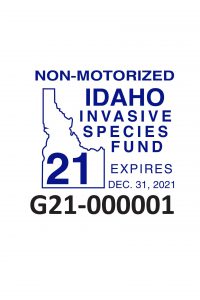
Three Options for Boating Education
- Free Boating Safety Class. View the current listing of classes and contact the instructor as directed (limited availability at this time).
- Home Study. Review materials and take a test in the comfort of your own home at your own pace (no cost). To request the study materials call 208-514-2426 or complete the online order form. Click here to take your home study test online.
- Online Education. The following vendors are approved for the state of Idaho (fees may apply).
-
- Boat-Ed (fee applies)
- Boater Exam (fee applies)
- Boat U.S. Foundation (free)
- Boat Smart (fee applies)
- Interactive Boating Course (fee applies)
Life Jacket Loaner Stations
Find a Life Jacket Loaner Station near you!
Answers to Common Questions
Videos
- Boat-Ed Safety Matters Video Series
- Boat U.S. Foundation How to Select and Fit a Life Jacket on a Child
- Boat U.S. Boating Simulation Games
- Coldwater Safety Training and Information
- Boating Safety PSA #1- with Idaho’s Hale Family
- Boating Safety PSA #2 – with Captain Keith Colburn
Resources
Why should your kids wear a life jacket?
It’s the law! Kids 14 years of age and under on boats 19 feet or less are required to wear a Coast Guard approved and properly fitting life jacket when underway. It is recommended that all passengers on boats wear life jackets – it can be the difference between life and death in an emergency (especially in cold water).
Life Jacket Save Lives
- PFD’s (personal flotation devices) must be Coast Guard approved, properly sized, and in good condition (no broken buckles, torn straps, rips, tears, etc). They must also be within easy reach.
- Children 14 and under must wear an approved life jacket when they are aboard a boat 19 feet in length or less whenever the boat is underway or under power. This applies to manually propelled boats such as canoes and rafts in addition to powerboats, sailboats, personal watercraft (jet skis) and fishing float tubes.
- Regardless of age, you must wear a personal flotation device (PFD) aboard a personal watercraft (jet ski) and when being pulled behind a vessel (I.e. – waterskiing, wakeboarding, tubing, etc.)
- The size of the boat determines the specific design types and quantities of PFDs required:
- Boats less than 16 feet long, as well as canoes and kayaks of any length, must have at least one (1) Type I, Type II, or Type III PFD for each person on board. A Type IV cushion or ring buoy will not meet this requirement.
- Boats 16 feet and longer (except canoes and kayaks of any length) must also carry a Type IV PFD (ring or cushion buoy).
- A Type V is a special purpose PFD that may be used in place of a Type I, II, or III if listed on the label as approved for the type of boating the boater is doing, such as whitewater rafting.
- Exemptions: Seaplanes, sailboards, and certain racing boats are exempt from these PFD requirements. Fly fishing float tubes do not require a PFD on lakes less than 200 surface acres. Fly fishing pontoons do require PFDs on all Idaho waters.
Click here for more information on how to choose a life jacket.
Cold Water Kills!
Click here to watch a video depicting cold water safety training and techniques.
In the past ten years nearly 67% of the fatal boating accidents in Idaho were the result of victims involuntarily entering the water from small boats. The average water temperature of Idaho’s water is 52 degrees, even during the summer! Wearing a life jacket can greatly increase your risk of surviving a cold water immersion situation.
4 Dangerous Categories of Cold Water Immersion
Cold Shock – Initial entry – 5 minutes:
- Involuntary gasping, hyperventilation, & vertigo
Swim Failure – 5 – 30 minutes:
- Even the best swimmers cannot function in cold water
- Muscles, nerves, arms & legs cool quickly
- Manual dexterity, grip strength & movement speed drop 60-80%
Hypothermia – 30 minutes or more:
- Depends on water temperature, clothing, body type & behavior
- Heat loss is 25 times faster in the water
Post Immersion Collapse:
- Heart problems can develop as cold blood is released into the body core from the extremities
To increase your chances of surviving cold water immersion, always wear your life jacket.
Learn more @ coldwatersafety.org
Life Jacket Loaner Stations
Find a Life Jacket Loaner Station near you!
Welcome to renting PWCs in Idaho!
PWC Forms and Documents
New PWC Rental Application & Information
PWC Rental – Forms
Documents
- Form 5013 – Personal Watercraft Laws and Safe Operation
- PWC Checklist – English
- PWC Checklist – Spanish
Questions? Email rene.rodriguez@idpr.idaho.gov or call 208-514-2426.
Boat Registration
For inquiries on boat registrations please call 1-888-922-6743. Staff below are not able to assist with your registration.
Rene Rodriguez
rene.rodriguez@idpr.idaho.gov
(208) 514-2426
Marine Event Law Enforcement Resources
Idaho Department of Parks and Recreation trains and provides resources to Idaho sheriff’s deputies and others responsible for patrolling Idaho’s waterways.
 Marine Event Permit Application
Marine Event Permit Application
Idaho law requires the person in charge of marine events to apply for a marine event permit 30 days prior to the event. You can download an electronic copy of the application or request a hard copy of the form from your local county sheriff’s office. If you download the electronic form, please save it, print it, then submit it directly to your local county sheriff’s office.
Please note that events on Federally controlled waters may be subject to additional permitting by the United States Coast Guard. Coast Guard permit applications must be submitted 135 days in advance of the event. Some popular Federal waters in Idaho include Lake Coeur d’Alene, Priest Lake, Lake Pend Oreille, Dworshak Reservoir, Bear Lake, Snake River, Clearwater River, St. Joe River, Salmon River, Priest River and Brownlee Reservoir. Associated tributaries for these bodies of waters may also be Federally controlled.
- View the complete list of Federally controlled waters
- Apply for a Coast Guard Permit
—All Resources Below are for Official Law Enforcement Use Only—
Marine Law Enforcement Courses
- Register for an MLE class
- Download information about the MLE classes offered
- Annual Marine Law Enforcement Academy: April 24 – May 1, 2025, class is full.
Boat Incident Report Forms
- General Report Form
- Additional People Form
- Additional Boat Form
- Additional Injury Form
- Additional Fatality Form
County RBS Grant Links and Resources
Apply for recreational boating safety grant
Marine Law Enforcement Reporting Database
Boat Idaho Instructor Reporting Sheet
Student Information Report Form
IDPR Equipment Requests
Request use of IDPR equipment (PWCs, Almar, or Jet Boat)
Questions: E-Mail the MLE program
FAQs
Use the My Boat box at the top of this page to have information electronically delivered to your mobile device or print out directly from a laptop or PC or you can also contact your local county sheriff’s office and speak with a marine deputy.
Boat registrations from other states are valid in Idaho for 60 consecutive days. Out-of-state boaters are required to purchase an invasive species sticker before launching in Idaho waters ($30 for motorized boats registered outside of Idaho and $7 for a non-motorized boat). If you enter Idaho and see a sign for a boat inspection station you must pull into the station and have all boats inspected for invasive species. More information on the invasive species program can be found at http://invasivespecies.idaho.gov/watercraft-inspection-stations/.
You should also be aware of Idaho’s life jacket law for children; kids 14 years old and under on board boats 19’ or less must wear the life jacket at all times while the boat is underway. This requirement applies to both power boats and non-motorized paddle craft.
For more information regarding the legality of these activities contact your local County Marine Deputy. Click here to find your county sheriff’s phone number.
Yes, vessels powered by electric trolling motors need to be registered in Idaho. Adding the electric trolling motor makes the vessel a motor-driven vessel, and all motorized vessels must register.
Your vessel only needs to be registered if it has any kind of motor. This includes electric trolling motors.
Vessels 12 feet and under are $30. Vessels over 12 feet are $30, plus $2 per foot for each additional foot. There is also a $1.50 vendor fee included in the total cost. These fees cover one calendar year and all boat registrations expire December 31. In addition, boats registered in Idaho are required to pay an additional $10 surcharge for the Idaho Invasive Species Sticker. For convenience, this $10 surcharge for the Idaho Invasive Species Sticker is included in the annual boat registration renewal fees and a separate sticker is not required for boats registered in Idaho.
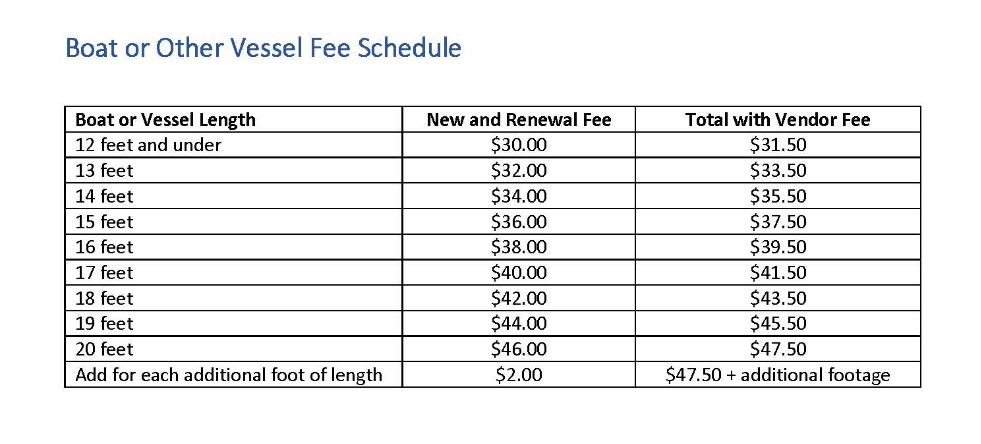
There is no legal requirement to carry boat insurance in Idaho. Due to the inherent risks associated with boating and taking into consideration the many factors that can lead to a boat accident, boat owners are advised to consult with their insurance agent to discuss options. Don’t forget, many insurance carriers offer a discount on your premium if you pass an approved boat safety course. To learn more about FREE boat safety courses click here.
If you are involved in a boating accident and the accident meets any of the following criteria, you must file a report with the sheriff in the county where the accident occurred:
- Damages to property involved in the accident are $1,500 or more.
- The accident results in an injury beyond first aid, missing person, or fatality.
An electronic copy of the report form can be downloaded. Once you fill the form out, take it with you to the local sheriff’s office.
Click here for information about PWC liveries.
PWC’s are small, jet-propelled boats designed to carry one to three people that sit on top rather than inside the vessel. Often referred to as “jet skis,” these watercraft are considered motorboats and are subject to the same regulations as motorboats, including equipment and responsible handling. Additionally, for a life jacket to be considered “readily accessible” on a PWC, it must be worn. All riders and persons being towed must wear their life jackets at all times while the PWC is under way.
There are no additional rules addressing PWCs, except when renting them. Idaho law requires those who rent PWCs to deliver education. Afterwards, each rider must carry the state’s verification of education card whenever operating (driving) a rented PWC. If one person out of a large group pays for the rental, he or she is legally responsible to make sure everyone else who rides also views the educational video and carries their own wallet card when they drive. Contact the IDPR Boating Program if you are a PWC rental business needing information.
Idaho counties have the authority to enact restrictions for personal watercraft that are more strict than state law. Examples of counties that have stricter laws than the state regarding PWC operation include Bonner and Kootenai Counties. It is your responsibility to know the rules for the county in which you plan to recreate.
PWC manufacturers recommend that all drivers be at least 16 years old, and that all riders wear a helmet, protective shoes/clothing, and a life jacket.
Special concerns for PWC Operators:
- There is a statewide no-wake zone. Slow to 5 mph within 100 feet of a dock, structure or person in the water.
- Wake jumping, when the craft is “airborne” close behind another boat is restricted. A safe distance is 100 feet.
- Towing a skier or tuber requires a manufacturer’s capacity rating for three people.
- It takes three to ski. The driver must have a passenger serve as the spotter and operate the skier-down flag. The PWC must have three-person seating for the operator, observer, and skier.
- Operating at night is prohibited without the proper combination of lights installed by the manufacturer.
- Yield the right-of-way to other powerboats and skiers.
Idaho has designated a 100-foot “no-wake zone” from all docks, structures and persons in the water on public waters statewide. Some counties have passed additional speed restrictions from the shoreline, between boats and at specific sites. It is a good idea to contact your local marine deputy before boating. County-specific ordinances dealing with speed limits are posted below. (This is not an all-inclusive list. Please contact your local county sheriff’s office for more information on county ordinances/laws pertaining to boating). State law allows for exemptions when pulling a water skier. Unless otherwise marked, it is ok to travel over a no-wake zone within 100 feet from the dock or person in the water when safely pulling a water skier straight out from a dock, or when safely dropping off a water skier back to a dock, or when the “other person in the water” is the vessel’s skier.
County-Specific Boating Laws and Ordinances I
If you would like to read the entire ordinance for the counties, just click on the county’s name.
Adams: 35 m.p.h. during the day, 20 m.p.h. at night. This includes the Snake River from Hells Canyon Park south to Oxbow Dam, and on Oxbow Reservoir from Eagle Island to Brownlee Dam.
Benewah: 50 m.p.h. during the day and 35 m.p.h. at night, county wide. 25 m.p.h. at all times from Cherry Bend Park to St. Maries Plywood Mill.
Bonner: 50 m.p.h. during the day and 25 m.p.h. at night, county wide.
Custer: Special regulations for Stanley Lake.
Kootenai: 50 m.p.h. during the day, 20 m.p.h. at night, county wide. On the Spokane and Coeur d’Alene Rivers, and Lower Twin Lakes the speed limits are 35 m.p.h. during the day and 20 m.p.h. at night.
Valley: Valley County has established a 300-feet no wake zone for all lakes in Valley County (Payette Lake, Little Payette Lake, Lake Cascade, Deadwood Reservoir, Horsethief Reservoir and Warm Lake.
Most county sheriff departments have deemed wake surfing to be legal when done in a safe manner. Citations could be issued for not having the wake surfer wear a life jacket or for allowing passengers to hang off the side of the boat or sit in areas of the boat not meant for seating (i.e. on the back of the boat or on the gunwale). Citations could also be issued for wake surfing behind an inboard/outboard or outboard boat which exposes the surfer to the propeller. County sheriff departments will likely issue a negligent operation citation for teak surfing due to the potential exposure to propellers or poisoning from carbon monoxide. For more information, contact your local county marine deputy. Click here to find your county sheriff’s phone number.
Wake surfing is a water sport in which a surfer trails behind a wakeboard boat, surfing the boat’s wake on a small surf board without being directly attached to the boat. The wake from the boat mimics the look and feel of an actual ocean wave. Teak surfing or platform dragging is when a person holds on to the swim platform of a boat as it drives forward and then the person is dragged through the water.
County sheriff departments will likely issue a negligent operation citation to operators that allow passengers to ride on the bow of a boat. Any time that a boat is in motion passengers should only be seated in those areas/locations specifically designed by the manufacturer for seating. Riding on the bow, gunwale/side, transom, engine cover, or any other part of the boat, not specifically designed for seating, greatly increases the risk of passenger injury or death. Bow riding, in particular, places passengers at high risk for falling overboard and being struck by the boat and propeller. Additionally, passengers seated on the bow greatly restrict the operator’s visibility and ability to react to potential hazards. For more information contact your local County Marine Deputy. Click here to find your county sheriff’s phone number.
There is no state law that requires boat operators to be of a minimum age or requires boat operators to take a safety class or proficiency exam. However, some counties have enacted local ordinances that require operators to be a certain age to operate power boats.
Here is a brief run down of county-specific ordinances involving age. (Keep in mind that there could be other county ordinances that are stricter than state law.) Make sure you check with your local marine deputies before heading out!
Adams County
- Children under the age of ten cannot operate a motor driven watercraft except when they are under direct adult supervision; Anyone under the age of 14 cannot operate or allow to be operated without adult supervision if the vessel is powered by a motor rated higher than 15 horsepower.
Benewah County
- Children between the ages of 10-14 cannot operate a motorboat with a motor rating of 15 horsepower or higher unless they are under direct supervision of an adult operator; Children under the age of 10 may not operate any motorboat except under the direct supervision of an adult.
Bonner County
- Children under the age of 10 cannot operate a motor-driven watercraft (including Personal Watercraft) unless under direct adult supervision; Children between the ages of 10-14 cannot operate a motorboat with a motor rating higher than 10 horsepower.
Kootenai County
- Adult supervision is required when an operator of a boat or other vessel is between the ages of 10-14, unless the motor is 15 horsepower or less.
Kids 14 years old and under must wear a Coast Guard approved life jacket when they are aboard a boat 19 feet in length or less, whenever the boat is underway or under power. This applies to paddle craft such as canoes, kayaks, paddleboards and rafts in addition to powerboats, sailboats, personal watercraft (jet skis) and fishing float tubes.
Idaho law requires that one properly fitting and Coast Guard approved life jacket must be on board for each person on a boat, and life jackets must be readily accessible. Stored under the seat or in a dry bag is not considered readily accessible. Of course, just like a seat belt during an auto accident, a life jacket won’t do you much good if you don’t have it on BEFORE you fall overboard. If you have a boat 16 feet or longer you also need a Type IV floatation aid which is designed to be thrown, not worn (i.e. ring buoy or cushion).
Paddle craft such as canoes, kayaks, paddleboards and rafts do not have to carry the Type IV floatation aid.
To locate information on fishing use the Idaho Fish and Game Fishing Planner. Boating access facility information and maps can be found at Bureau of Land Management’s Boater Guide, Idaho Power boating facilities and Take Me Fishing.
You can also use this map here to view boat launch locations.
Idaho has a county-based boating program. To obtain information about a specific location, contact the county parks and recreation manager, or the county waterways chairperson. Most county commissioners appoint a waterways committee to advise on matters relating to waterways docks, construction, maintenance, local laws and user fees. In some cases the site may be managed by a federal agency, a private marina, a power company or a city.
For information and permits to place or maintain docks, buoys, or anything else on the public waterway contact the Idaho Department of Lands, Navigable Waters Section.
Fly fishing float tubes are considered a vessel in Idaho and do need to have a Coast Guard approved life jacket and a sound producing device on board. They are exempt from registration. You need not carry a life jacket when on lakes smaller than 200 surface acres at natural high water.
Non-commercial permits are required to run four rivers in Idaho. The permitting system is administered by the U.S Forest Service; permits are available for purchase @ Recreation.gov.
The 4 Rivers Requiring these permits are:
To obtain more information about floating the Boise River, visit Ada County Parks and Waterways.
The U.S. Coast Guard has determined that paddleboards are vessels when used outside a marked swimming, surfing or bathing area. Before venturing out on the water with your stand-up paddleboard please remember you must have a life jacket, whistle, and an invasive species sticker. Inflatable paddleboards less than 10’ in length are exempted from the invasive species sticker requirement. Kids 14 years old and under are required to wear a life jacket on a paddleboard. Similar to power boat operators, paddleboard operators are subject to arrest for being under the influence of alcohol or drugs. To receive additional safety information fill out the My Boat box below.
/* “function”==typeof InitializeEditor,callIfLoaded:function(o){return!(!gform.domLoaded||!gform.scriptsLoaded||!gform.themeScriptsLoaded&&!gform.isFormEditor()||(gform.isFormEditor()&&console.warn(“The use of gform.initializeOnLoaded() is deprecated in the form editor context and will be removed in Gravity Forms 3.1.”),o(),0))},initializeOnLoaded:function(o){gform.callIfLoaded(o)||(document.addEventListener(“gform_main_scripts_loaded”,()=>{gform.scriptsLoaded=!0,gform.callIfLoaded(o)}),document.addEventListener(“gform/theme/scripts_loaded”,()=>{gform.themeScriptsLoaded=!0,gform.callIfLoaded(o)}),window.addEventListener(“DOMContentLoaded”,()=>{gform.domLoaded=!0,gform.callIfLoaded(o)}))},hooks:{action:{},filter:{}},addAction:function(o,r,e,t){gform.addHook(“action”,o,r,e,t)},addFilter:function(o,r,e,t){gform.addHook(“filter”,o,r,e,t)},doAction:function(o){gform.doHook(“action”,o,arguments)},applyFilters:function(o){return gform.doHook(“filter”,o,arguments)},removeAction:function(o,r){gform.removeHook(“action”,o,r)},removeFilter:function(o,r,e){gform.removeHook(“filter”,o,r,e)},addHook:function(o,r,e,t,n){null==gform.hooks[o][r]&&(gform.hooks[o][r]=[]);var d=gform.hooks[o][r];null==n&&(n=r+”_”+d.length),gform.hooks[o][r].push({tag:n,callable:e,priority:t=null==t?10:t})},doHook:function(r,o,e){var t;if(e=Array.prototype.slice.call(e,1),null!=gform.hooks[r][o]&&((o=gform.hooks[r][o]).sort(function(o,r){return o.priority-r.priority}),o.forEach(function(o){“function”!=typeof(t=o.callable)&&(t=window[t]),”action”==r?t.apply(null,e):e[0]=t.apply(null,e)})),”filter”==r)return e[0]},removeHook:function(o,r,t,n){var e;null!=gform.hooks[o][r]&&(e=(e=gform.hooks[o][r]).filter(function(o,r,e){return!!(null!=n&&n!=o.tag||null!=t&&t!=o.priority)}),gform.hooks[o][r]=e)}}); /* ]]> */
My Boat
- This field is for validation purposes and should be left unchanged.
- select boat typeMotorboat less than 16'Motorboat 16' or longerPersonal Watercraft (PWC)SailboatCanoeKayakStand-up Paddleboard (SUP)RaftDrift boat
- Optional. Enter your email address to have the results emailed to you directly.
Boating Safety Links:
- Idaho Power Recreational Facilities
- National Association of State Boating Law Administrators
- National Safe Boating Council
- National Safe Boating Week
- National Water Safety Congress
- Personal Watercraft Industry Association (PWIA)
- River Flows
- U. S. Coast Guard 13th District
- U.S. Coast Guard Office of Boating Safety
- U.S. Power Squadrons
- Water levels at Boise Area Reservoirs
- Life-Saving Tips for Kids
Boating Organizations:
View PDF relating to financial information about county boating programs.
Yes. Idaho law requires the person in charge of marine events to apply for a marine event permit 30 days prior to the event. You can download an electronic copy of the application or request a hard copy of the form from your local county sheriff’s office. If you download the electronic form, please save it, print it, then submit it directly to your local county sheriff’s office.
Please note that events on Federally controlled waters may be subject to additional permitting by the United States Coast Guard. Coast Guard permit applications must be submitted 135 days in advance of the event. Some popular Federal waters in Idaho include Lake Coeur d’Alene, Priest Lake, Lake Pend Oreille, Dworshak Reservoir, Bear Lake, Snake River, Clearwater River, St. Joe River, Salmon River, Priest River and Brownlee Reservoir. Associated tributaries for these bodies of waters may also be Federally controlled. See the complete list of Federally controlled waters. Apply for a Coast Guard Permit.
There are approximately 90,000 motorized vessels registered in Idaho each year.
Non-motorized boats (that do not have a motor) are not required to be registered and therefore are not counted.
Currently there are no federal, state or local laws that prohibit the use of two-stroke motors anywhere in Idaho.
Open containers are allowed on a boat, but the same rules that apply to drinking and driving also apply to drinking and boating as far as impairment. Boat operators can be arrested for Operating Under the Influence (OUI) if their blood alcohol level is 0.08% or greater. Those convicted of operating a boat under the influence can receive a maximum fine of $1,000 and a sentence of up to six months in the county jail.
Approximately 40 boat operators are arrested each year in Idaho for OUI. It is strongly recommend to have a designated driver. Alcohol is even more hazardous on the water than on land. The marine environment – motion, vibration, engine noise, sun, wind and spray – accelerates a drinker’s impairment. These stressors cause fatigue that makes a boat operator’s coordination, judgment and reaction time decline even faster when using alcohol. Alcohol is also a contributing factor to many boat accidents (including fatal accidents). Don’t drink and boat!
Sellers:
If you are selling your boat to someone else, there are a few things you need to do.
- Fill out a bill of sale and give to the buyer.
- If applicable, give the title to the buyer.
Buyers:
If you have recently purchased a boat, you will need to take the Bill of Sale, Title (if applicable)*, and the Transfer Form (shown above) to the Department of Motor Vehicles.
*Boat titles are not required on boats before the year 2000.
Best Parks for Enjoying Sailing
RVing
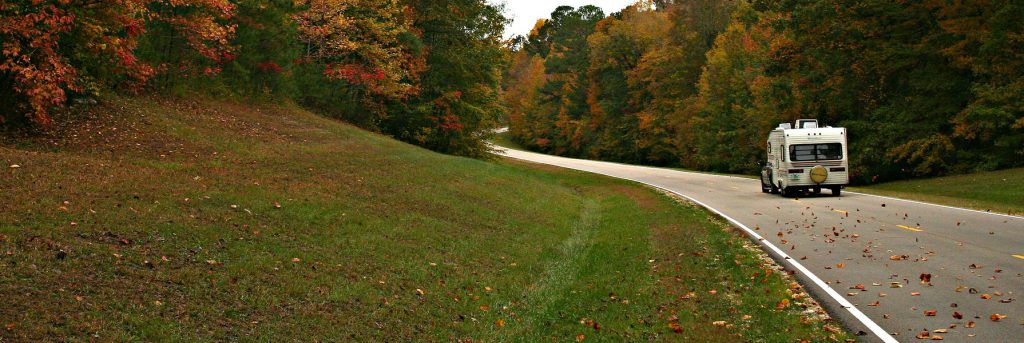
RVing
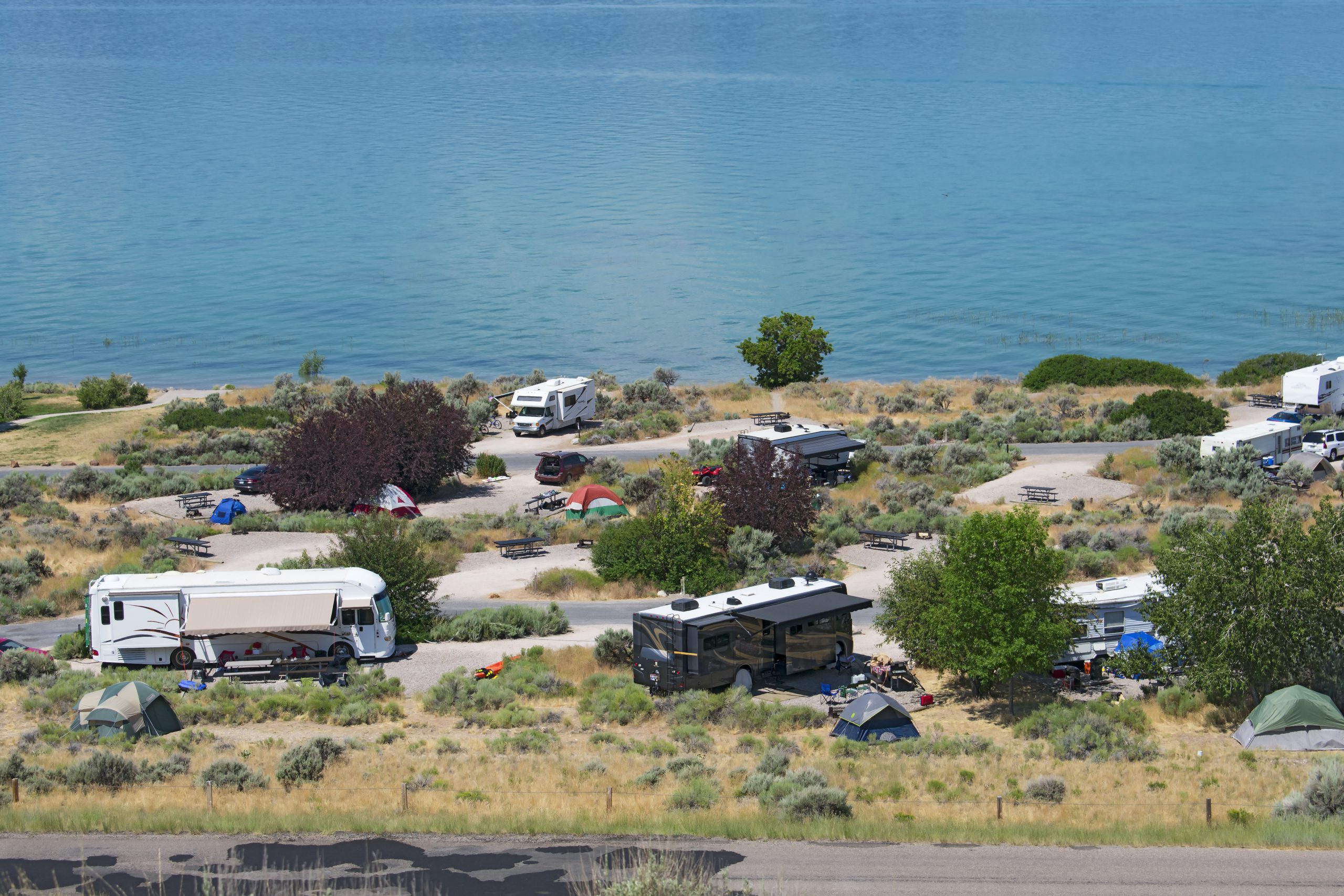
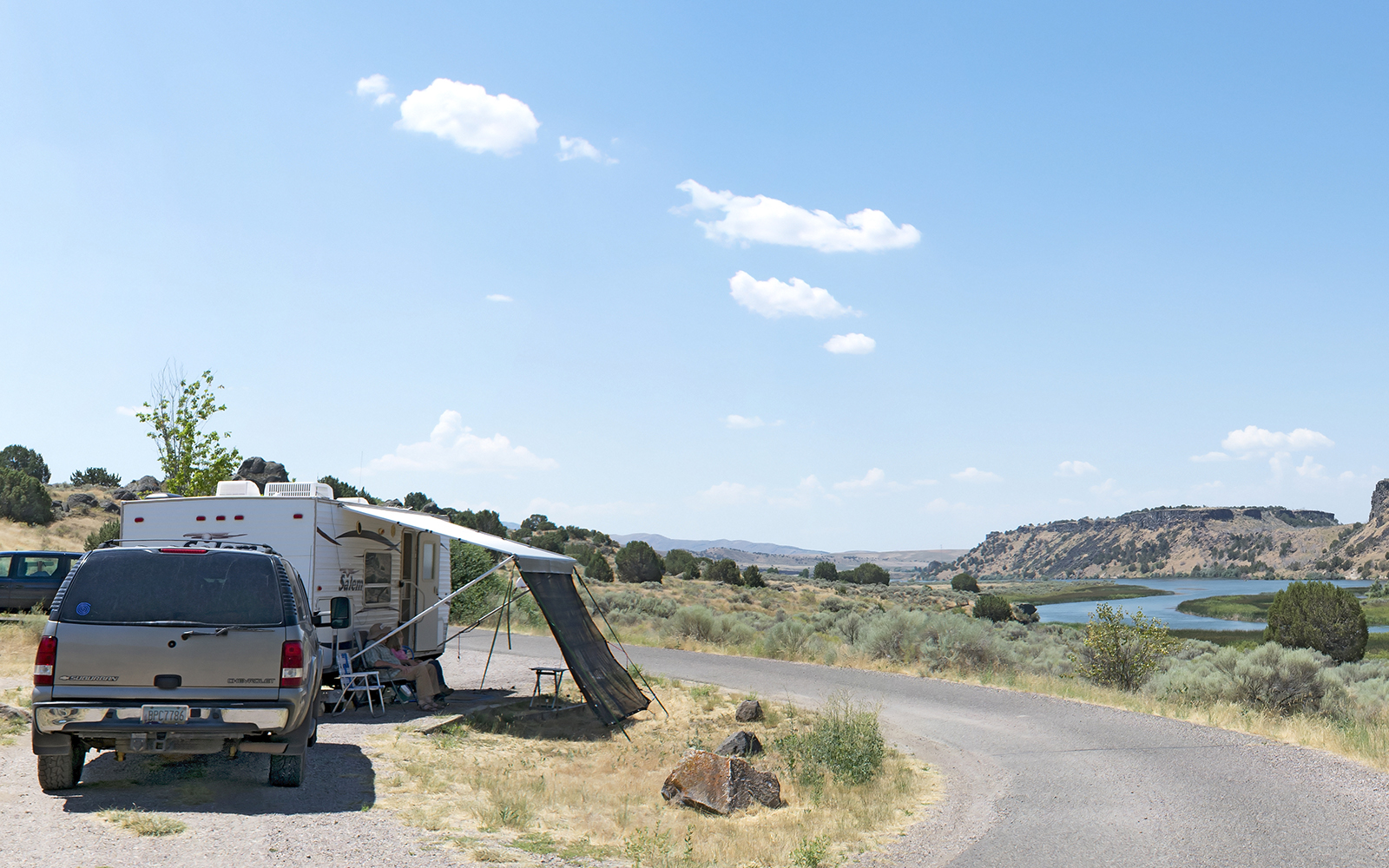
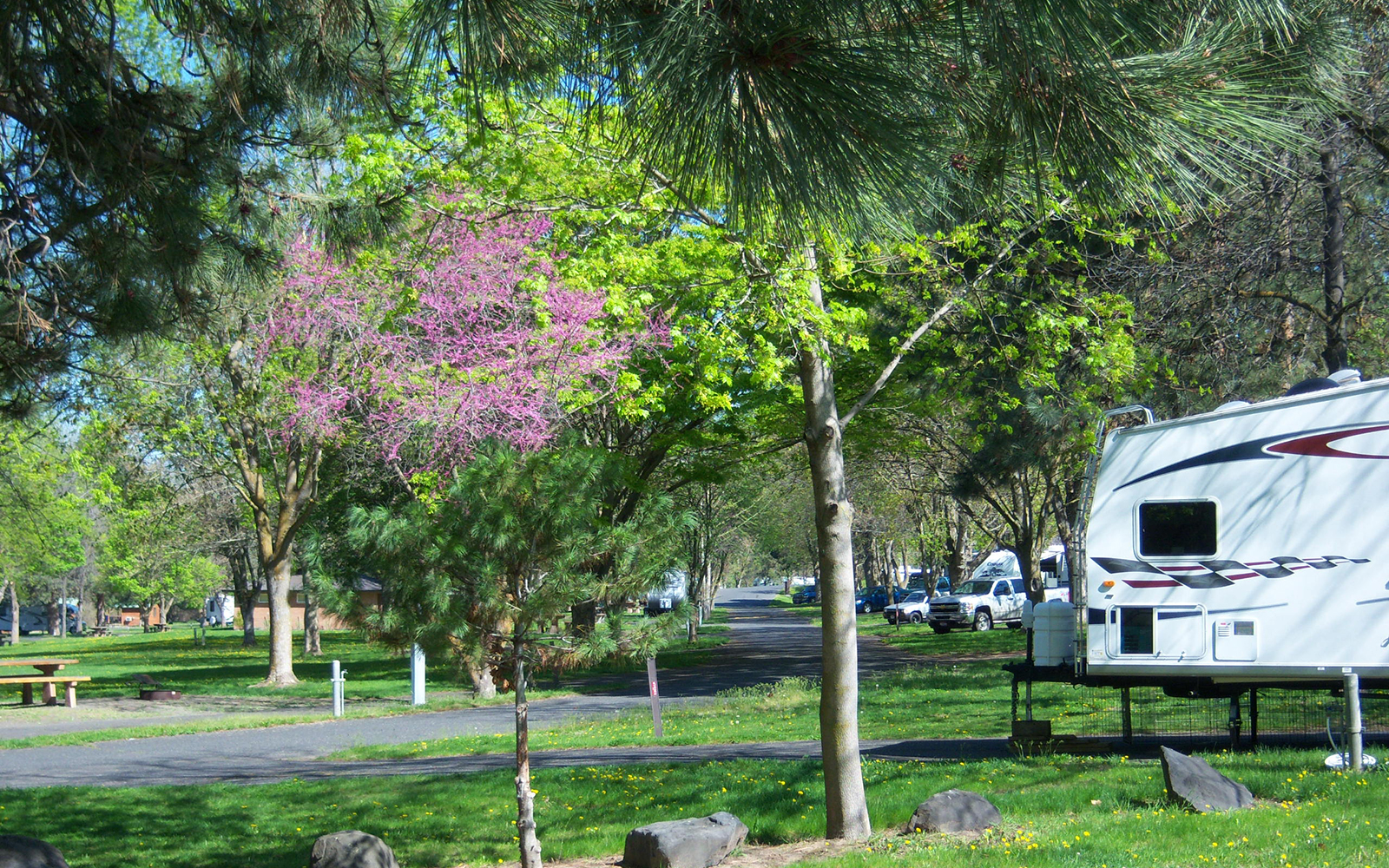
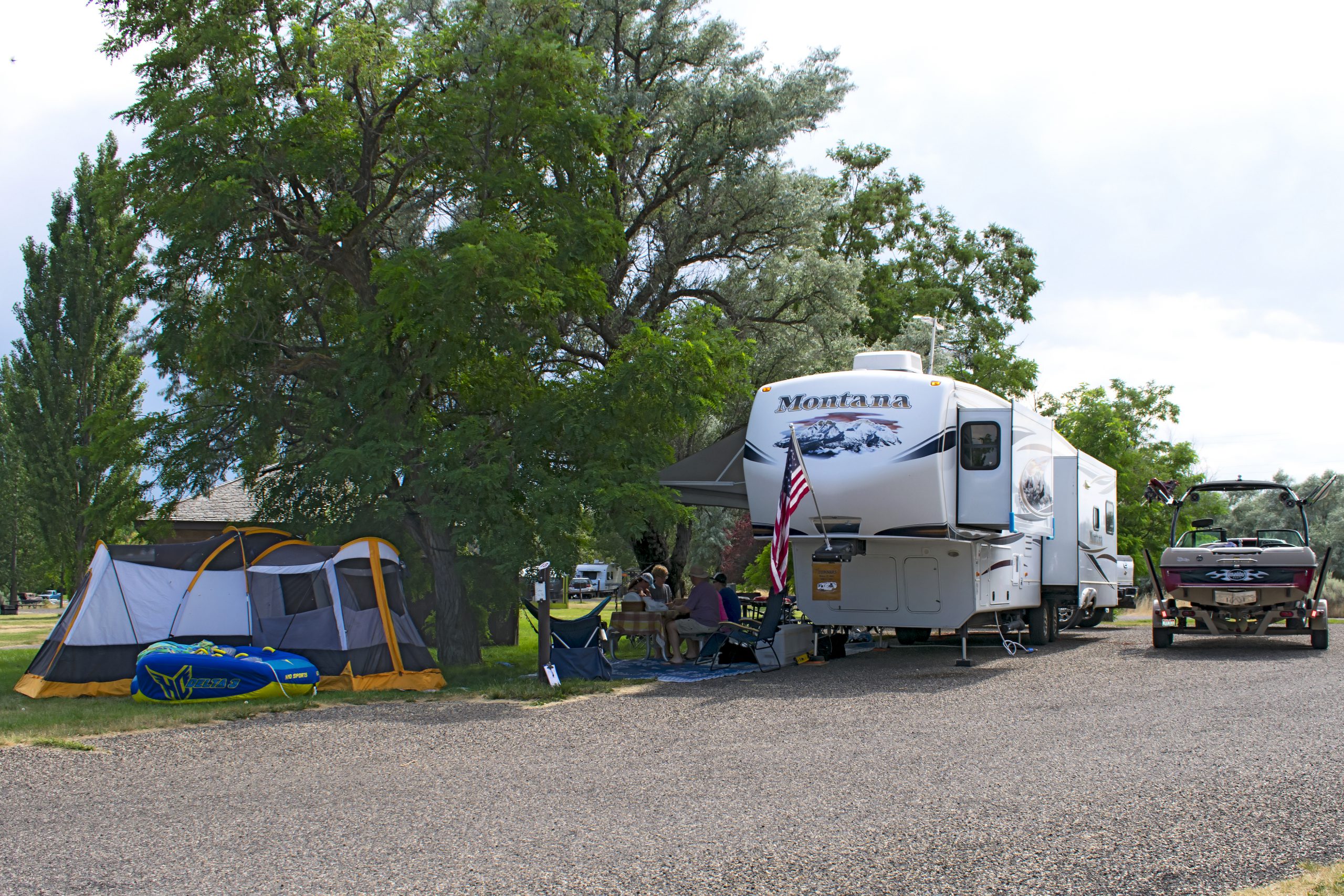
Where are the best parks in the Idaho State Parks system to camp with your RV? Our parks offer a variety of RV experiences, whether you’re looking for all of the amenities or a more primitive experience. Below are some of the most popular Idaho State Parks for RVs.
Looking for some help planning your RV trip in Idaho? Click the links below for suggestions on how to navigate through the great state of Idaho in your Recreational Vehicle. We’ve got some great sites and sights!
Idaho’s Scenic Byways
Are you looking for the most scenic, historic and beautiful natural attractions in Idaho? There are 30 scenic byways in Idaho many of which run in or near Idaho State Parks. Visit Idaho’s Scenic Byways and start planning your trip through the gem state!
Other Links
Current Idaho RV Registration Holders
Reservation fees are waived for Idaho residents who have current, valid Idaho RV registration stickers. Reservation fees for these customers are paid for by a grant from the Idaho RV Program. Proof of registration is required at time of arrival.
Limited Income
Idaho residents showing proof of limited income (Medicaid card) or who sign a limited income form will receive a discount of $4 on camping.
Idaho Disabled Veterans
Idaho Veterans with a service-connected disability, rated at 100% permanent and total, receive free day-use access and one free campsite per stay within Idaho State Parks. Apply today!
Please note: It may take 3 – 4 weeks for applications to be approved and possibly longer during the busy season (Memorial Day to Labor Day). You will need to have your card in hand before receiving the discount at the parks.
- Idaho Disabled Veterans Application – Fillable
- Click Here to Submit and Upload a Digital Application
Senior Discount
Those 62 or older will receive 50% off camping fees within select Idaho State Parks. The discount is valid mid-week on stays Monday – Thursday (excluding holidays), allowing you the opportunity to experience a few of Idaho’s favorite places to play for a fraction of the cost. Cash in on your savings at any of these participating state parks:
- North Idaho: Dworshak, Heyburn, Winchester
- South Idaho: Lake Cascade, (excluding Poison Creek and Ridgeview Campgrounds) Three Island Crossing, Bruneau Dunes
- East Idaho: Bear Lake, Lake Walcott, Massacre Rocks
The discount applies to campsites only and is not offered for use of premium sites, cabins, yurts, or group facilities.
Fees
Fees collected by Idaho State Parks and Recreation go directly back into the operation and maintenance of parks and recreation programs. The camping fees listed below are tax inclusive. Camping fees include the right to use designated campgrounds and facilities. Utilities and facilities may be restricted by weather or other factors. Current fees can also be found on individual park tabs on this website.
Note: Campsite fees listed below do not include MVEF (Motor Vehicle Entrance Fee). Additional fees are applied for non-residents. Discounts may apply for certain customers including discounts for MVEF, 100% Disabled Idaho Veterans and more.
Payment must be made at the time of occupancy of the campsite. Failure to pay fees at the time of check-in will result in a surcharge or citation in addition to camping fees. Credit Cards are not accepted at the self-pay stations in the campground, only at the Visitor Center. Those expecting to arrive after the Visitor Center closes are highly encouraged to bring cash or check, or make a reservation and pay online prior to their arrival.
Campsite & Facility Fees
| Campsite Type | Campsite Description | Cost Range |
|---|---|---|
| Basic | Any defined campsite, either tent pad or RV pad/area. May include: water, table, and/or grill. | $14-$24 |
| Electric | Basic site with electricity. May include: water. | $26-$32 |
| Full Hook-Up | Basic site with water, electricity, and sewer hook-ups at site. | $28-$40 |
| Companion Campsites | Any above site type with greater equiptment/people capacity. Fee determined by actual site type. | $46-$80 |
Facility Type
| Facility Type | Campsite Description | Cost Range |
|---|---|---|
| Camper Cabin | One-room cabins that sleep up to 5 on bunk beds, and futons. Cook outside on the grill-covered fire pit. Cabins are powered, heated, and air conditioned. | $80-$90 |
| Deluxe Cabin | Cabins come with a full-size refrigerator, stove/oven, microwave, and dishwasher. Kitchens include: cookware, bakeware, dinnerware, utensils, cups, coffee maker, toaster, and so much more! Bedrooms & bathrooms come stocked with blankets, sheets, and towels. | $140-$300 |
| Yurts | Various sized yurts available across the state with a wide-array of amenities offered. Yurt types include: Backcountry, Deluxe, and Premium. | $90-$175 |
Non-Resident Fees
| Service | Description | Cost |
|---|---|---|
| Non-Resident Campsite Fee | Additional fee assessed per night for non-residents at Farragut, Henrys Lake, Ponderosa, Priest Lake & Round Lake State Parks. Additional fee assessed per night for non-residents at all other State Parks. | $24-$80 (Tier A) $3 |
| Non-Resident Camper Cabin/ Yurt Fee | Additional fee assessed per night for non-residents. | $5-$10 |
| Non-Resident Fee (Other) | Additional fee assessed per night for non-resident use of: houses, cottages, deluxe cabins, group camps, lodges, etc. | Varies |
| Motor Vehicle Entry Fee — General Non-Resident Motor Vehicle Entry Fee — Extra | A Motor Vehicle Entrance Fee is charged for each vehicle entering the parks. Non-Residents pay a doubled fee to enter Bear Lake, Farragut, Hells Gate, Priest Lake & Round Lake. | $7 $14 |
| Annual Motor Vehicle Entry Fee (MVEF) | An Annual MVEF is ideal for out-of-staters who do not qualify for the Idaho State Parks Passport. | $80 |
Other Fees
| Service | Description | Cost |
|---|---|---|
| Motor Vehicle Entry Fee — General Non-Resident Motor Vehicle Entry Fee — Extra | A Motor Vehicle Entrance Fee is charged for each vehicle entering the parks. Non-Residents pay a doubled fee to enter Bear Lake, Farragut, Hells Gate, Priest Lake & Round Lake. | $7 $14 |
| Annual MVEF | An Annual MVEF is ideal for out-of-staters who do not qualify for the Idaho State Parks Passport. | $80 |
| Entrance Surcharge | Additional fee for park users who fail to pay or display proof of payment. | $20 |
| Overnight Vehicle | Fee is applied to non-campers who leave vehicles/trailers overnight within the park. | $20 |
| Extra Vehicle Fee | Fee is applied to any vehicle/trailer staying overnight within the park where camping unit vehicle maximum capacity has been reached. | $8 |
| Camp Shower | Fee is applied to anyone using shower facilities that is not staying within the park. | $3 |
| Boat Moorage | Charge for overnight moorage without additional site reservation. | $10 |
| Boat Moorage – Camping | Charge for overnight moorage with additional site reservation. | $9 |
| Reservation Fee | Fee for making a reservation. | $10-$25 |
| Processing Fee | Fee for processing a credit card. | 3% |
Best Parks for Enjoying RVing
Playgrounds
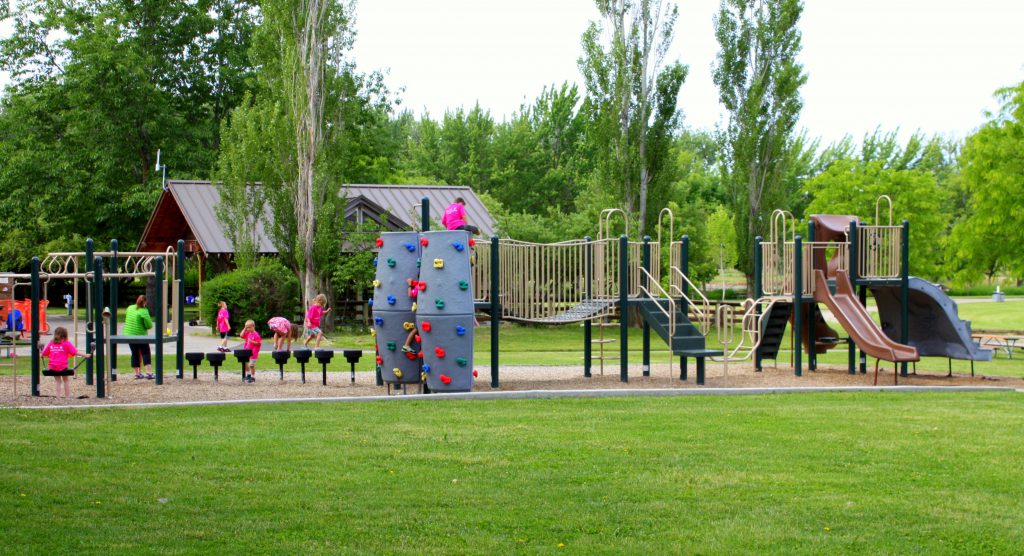
Playgrounds
Playgrounds are always a hit with the kids!
Best Parks for Enjoying Playgrounds
Paddlesports
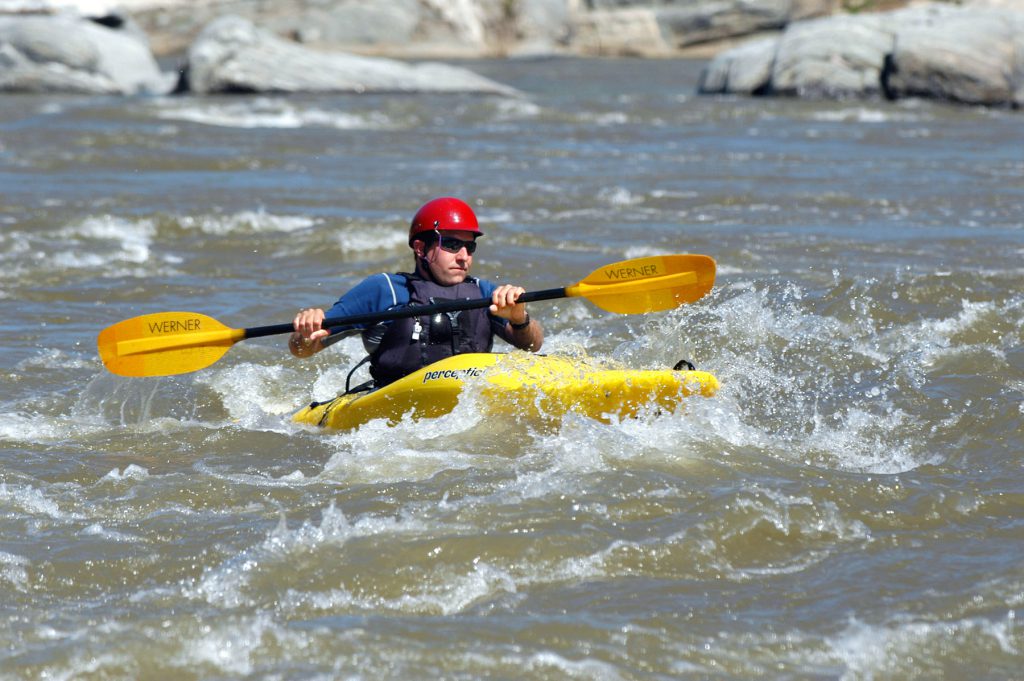
Paddlesports
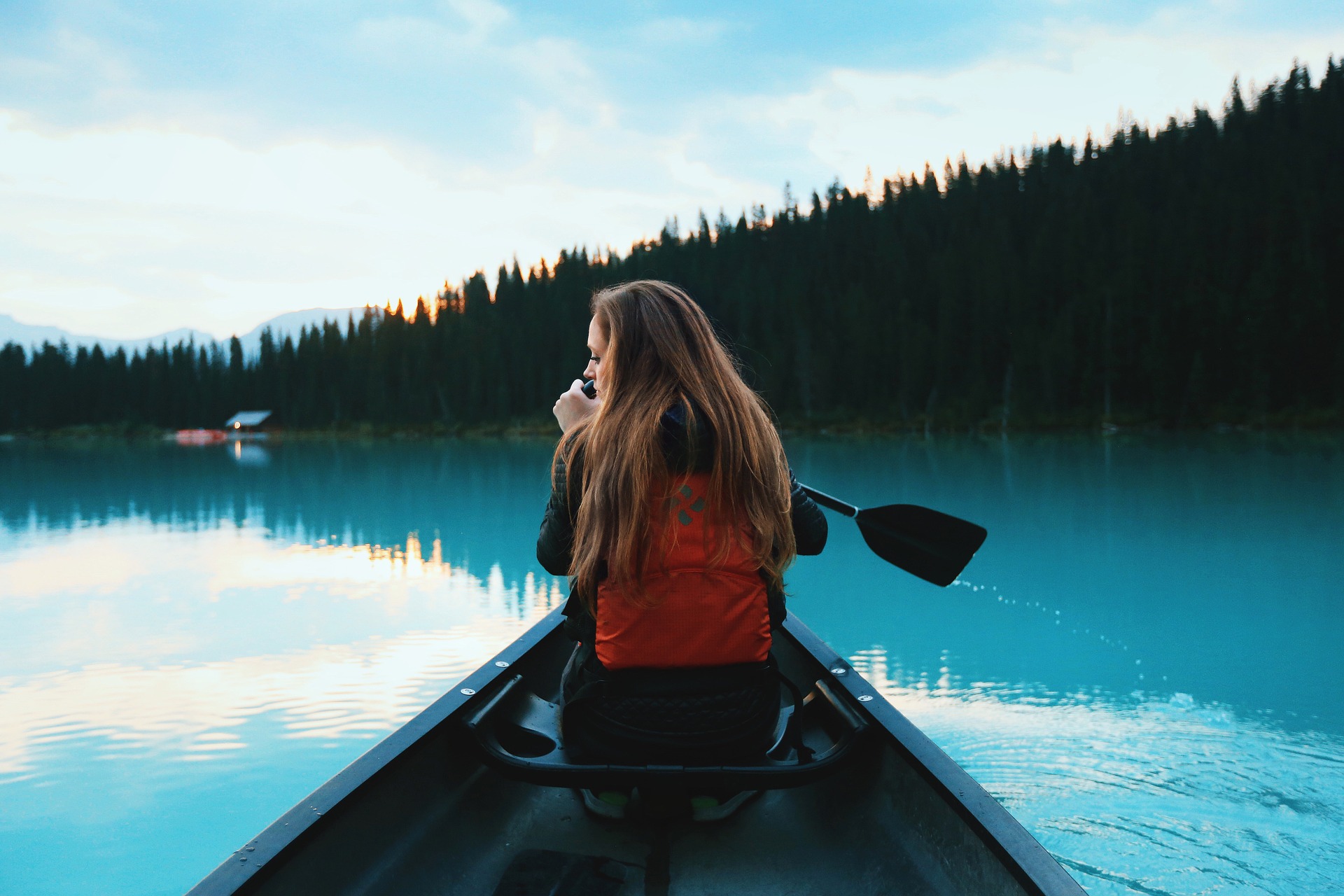
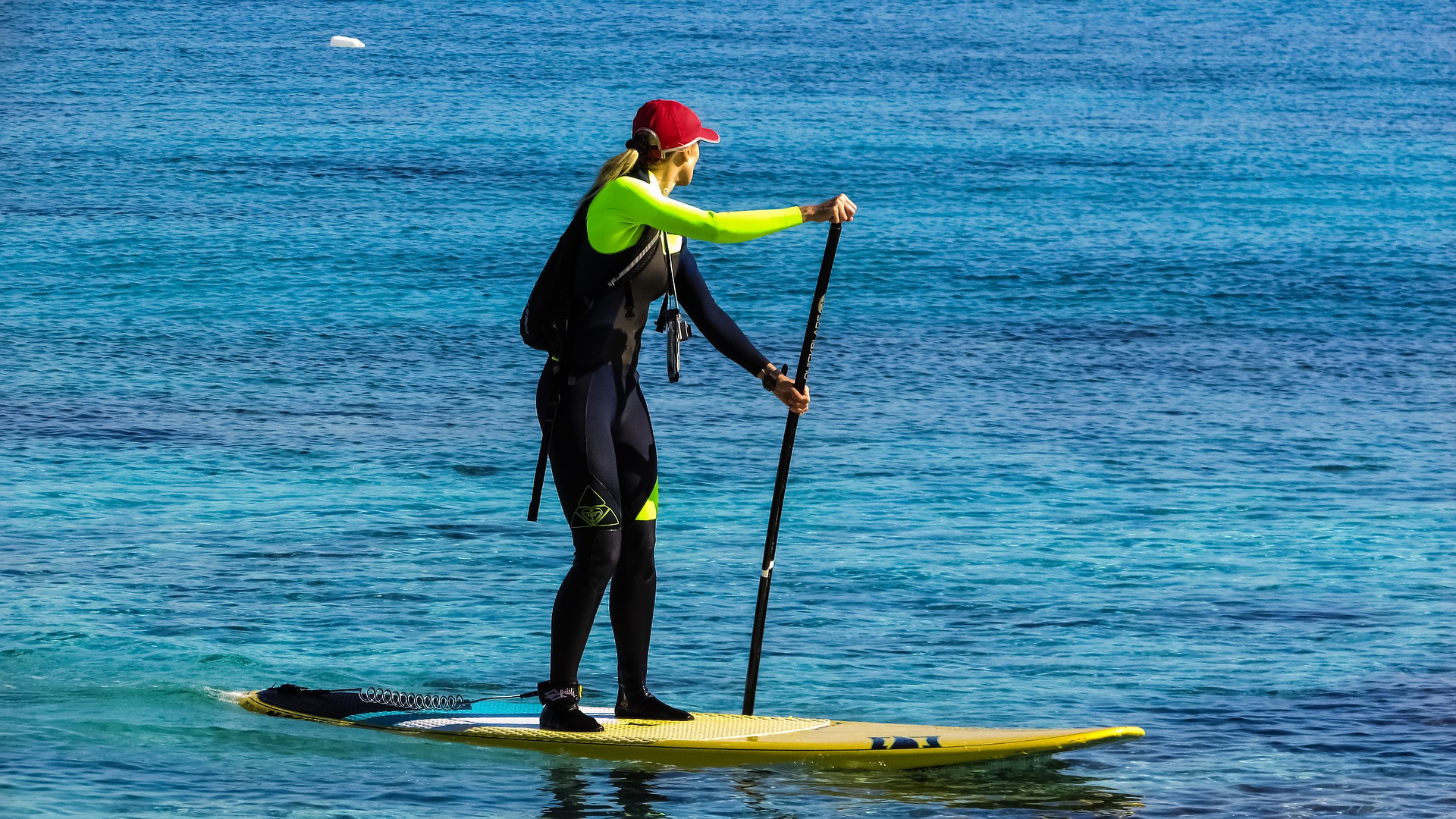
Attention New Paddlecraft Owners
Three tips to keep you safe on the river
1. Wear your life jacket
Many fatalities involving paddlecraft result from falling overboard and drowning. Always remember to wear a U.S. Coast Guard approved life jacket.
2. Know the river hazards
Rocks and trees can be dangerous in moving water. Don’t get caught in a strainer or a foot entrapment. Be aware of cold water – it can kill!
3. Don’t exceed your abilities
Don’t head for big water until you have plenty of experience. Respect your limits and be aware that some paddlecraft may not be suitable for rivers.
Why should your kids wear a life jacket?
It’s the law! Kids 14 years of age and under on boats 19 feet or less are required to wear a Coast Guard approved and properly fitting life jacket when underway. It is recommended that all passengers on boats wear life jackets – it can be the difference between life and death in an emergency (especially in cold water).
Life Jacket Save Lives
- PFD’s (personal flotation devices) must be Coast Guard approved, properly sized, and in good condition (no broken buckles, torn straps, rips, tears, etc). They must also be within easy reach.
- Children 14 and under must wear an approved life jacket when they are aboard a boat 19 feet in length or less whenever the boat is underway or under power. This applies to manually propelled boats such as canoes and rafts in addition to powerboats, sailboats, personal watercraft (jet skis) and fishing float tubes.
- Regardless of age, you must wear a personal flotation device (PFD) aboard a personal watercraft (jet ski) and when being pulled behind a vessel (I.e. – waterskiing, wakeboarding, tubing, etc.)
- The size of the boat determines the specific design types and quantities of PFDs required:
- Boats less than 16 feet long, as well as canoes and kayaks of any length, must have at least one (1) Type I, Type II, or Type III PFD for each person on board. A Type IV cushion or ring buoy will not meet this requirement.
- Boats 16 feet and longer (except canoes and kayaks of any length) must also carry a Type IV PFD (ring or cushion buoy).
- A Type V is a special purpose PFD that may be used in place of a Type I, II, or III if listed on the label as approved for the type of boating the boater is doing, such as whitewater rafting.
- Exemptions: Seaplanes, sailboards, and certain racing boats are exempt from these PFD requirements. Fly fishing float tubes do not require a PFD on lakes less than 200 surface acres. Fly fishing pontoons do require PFDs on all Idaho waters.
Click here for more information on how to choose a life jacket.
Cold Water Kills!
Click here to watch a video depicting cold water safety training and techniques.
In the past ten years nearly 67% of the fatal boating accidents in Idaho were the result of victims involuntarily entering the water from small boats. The average water temperature of Idaho’s water is 52 degrees, even during the summer! Wearing a life jacket can greatly increase your risk of surviving a cold water immersion situation.
4 Dangerous Categories of Cold Water Immersion
Cold Shock – Initial entry – 5 minutes:
- Involuntary gasping, hyperventilation, & vertigo
Swim Failure – 5 – 30 minutes:
- Even the best swimmers cannot function in cold water
- Muscles, nerves, arms & legs cool quickly
- Manual dexterity, grip strength & movement speed drop 60-80%
Hypothermia – 30 minutes or more:
- Depends on water temperature, clothing, body type & behavior
- Heat loss is 25 times faster in the water
Post Immersion Collapse:
- Heart problems can develop as cold blood is released into the body core from the extremities
To increase your chances of surviving cold water immersion, always wear your life jacket.
Learn more @ coldwatersafety.org
Life Jacket Loaner Stations
Find a Life Jacket Loaner Station near you!
Download a brochure about white water safety
Download a brochure for new paddlecraft owners
Safety tips
Follow these guidelines to make your trip safe and fun:
Pick an appropriate stretch of river
-
Match your skills and experience to the class of river using the Scale of Difficulty. The Scale of Difficulty rates a rapid by the level of skill needed to navigate its obstacles and to survive an accidental swim.
Dress for an unexpected swim!
-
Cold water can rob you of your strength, impair your ability to swim and cause hypothermia. Wear a wetsuit, drysuit, nylon or fleece layers — never cotton!
Use proper equipment
- Coast Guard approved white water life jacket (Type 3 or 5).
- Helmet
- Cold water protective clothing (never cotton) and protective footwear
- Throw rope, whistle, knife
Keep your group close together
- Prepare a float plan and rescue strategy
- Remember: the safety of your group is only as strong as your least experienced member
Recognize and avoid hazards
- Look for fallen trees, low hanging branches
- Rocks and undercuts
- Powerful water hydraulics
Swim aggressively or defensively
- Away from hazards, toward calm water, shore or raft
- Avoid undercut banks and rocks
- Point feet up and pointed downstreams
- Use arms to maneuver
- Don’t stand up! Fast water can entrap your foot, between rocks, push you over and pin you under the surface.
Self rescue
- If spilled, check your partner, get upstream and swim to safest shore
- Leave the boat only when it will improve your personal safety
- If rescue isn’t likely, if the water is numbing cold or if a worse set of rapids is approaching, swim to the safest shore.
 Idaho, the “whitewater state”, is a river-runner’s dream. But there are risks associated with whitewater paddling.
Idaho, the “whitewater state”, is a river-runner’s dream. But there are risks associated with whitewater paddling.
Three Options for Boating Education
- Free Boating Safety Class. View the current listing of classes and contact the instructor as directed (limited availability at this time).
- Home Study. Review materials and take a test in the comfort of your own home at your own pace (no cost). To request the study materials call 208-514-2426 or complete the online order form. Click here to take your home study test online.
- Online Education. The following vendors are approved for the state of Idaho (fees may apply).
-
- Boat-Ed (fee applies)
- Boater Exam (fee applies)
- Boat U.S. Foundation (free)
- Boat Smart (fee applies)
- Interactive Boating Course (fee applies)
Life Jacket Loaner Stations
Find a Life Jacket Loaner Station near you!
Answers to Common Questions
Videos
- Boat-Ed Safety Matters Video Series
- Boat U.S. Foundation How to Select and Fit a Life Jacket on a Child
- Boat U.S. Boating Simulation Games
- Coldwater Safety Training and Information
- Boating Safety PSA #1- with Idaho’s Hale Family
- Boating Safety PSA #2 – with Captain Keith Colburn
Resources
Boat Registration
For inquiries on boat registrations please call 1-888-922-6743. Staff below are not able to assist with your registration.
Rene Rodriguez
rene.rodriguez@idpr.idaho.gov
(208) 514-2426
Marine Event Law Enforcement Resources
Idaho Department of Parks and Recreation trains and provides resources to Idaho sheriff’s deputies and others responsible for patrolling Idaho’s waterways.
 Marine Event Permit Application
Marine Event Permit Application
Idaho law requires the person in charge of marine events to apply for a marine event permit 30 days prior to the event. You can download an electronic copy of the application or request a hard copy of the form from your local county sheriff’s office. If you download the electronic form, please save it, print it, then submit it directly to your local county sheriff’s office.
Please note that events on Federally controlled waters may be subject to additional permitting by the United States Coast Guard. Coast Guard permit applications must be submitted 135 days in advance of the event. Some popular Federal waters in Idaho include Lake Coeur d’Alene, Priest Lake, Lake Pend Oreille, Dworshak Reservoir, Bear Lake, Snake River, Clearwater River, St. Joe River, Salmon River, Priest River and Brownlee Reservoir. Associated tributaries for these bodies of waters may also be Federally controlled.
- View the complete list of Federally controlled waters
- Apply for a Coast Guard Permit
—All Resources Below are for Official Law Enforcement Use Only—
Marine Law Enforcement Courses
- Register for an MLE class
- Download information about the MLE classes offered
- Annual Marine Law Enforcement Academy: April 24 – May 1, 2025, class is full.
Boat Incident Report Forms
- General Report Form
- Additional People Form
- Additional Boat Form
- Additional Injury Form
- Additional Fatality Form
County RBS Grant Links and Resources
Apply for recreational boating safety grant
Marine Law Enforcement Reporting Database
Boat Idaho Instructor Reporting Sheet
Student Information Report Form
IDPR Equipment Requests
Request use of IDPR equipment (PWCs, Almar, or Jet Boat)
Questions: E-Mail the MLE program
Welcome to renting PWCs in Idaho!
PWC Forms and Documents
New PWC Rental Application & Information
PWC Rental – Forms
Documents
- Form 5013 – Personal Watercraft Laws and Safe Operation
- PWC Checklist – English
- PWC Checklist – Spanish
Questions? Email rene.rodriguez@idpr.idaho.gov or call 208-514-2426.
Invasive Species Sticker Assistance: 1-888-922-6743 (M-F 8am to 7pm MST)
Idaho’s Invasive Species Law
Idaho law states that any motorized or non-motorized boat operating in Idaho is required to display an Invasive Species Fund (ISF) sticker. When you purchase and display an ISF sticker, you contribute to a fund that provides vessel inspections, washing stations and informational materials that will assist Idaho with preventing the introduction of aquatic invasive species like quagga mussels.
WHAT VESSELS NEED TO HAVE THE STICKER?
- Any watercraft coming in from out of state that is not registered in the state of Idaho.
- Any watercraft including, but not limited to; boats, canoes, kayaks, stand up paddleboards, rafts, etc.
- Registered watercraft in the state of Idaho have the invasive species sticker included in the registration. The invasive species sticker must be visible on watercraft.
WHAT VESSELS ARE EXEMPT FROM PURCHASING THE STICKER?
To be exempt, watercraft need to meet ALL of the following criteria:
- Less than 10ft in length.
- Non-motorized.
- Inflatable.
For Frequently Asked Questions and other information about the Invasive Species Program, please visit the Idaho State Department of Agriculture.
Purchase Invasive Species Fund Stickers
Boaters can purchase ISF stickers online, at any Idaho State Park or at specific vendors.
Invasive species are harmful, non-native plants, animals, and pathogens that damage our economy and environments. Invasive species can move into and dominate both natural and managed systems by disrupting the ability of those systems to function sustainably. They are highly competitive, persistent, and can create monocultures that will eliminate Idaho’s diverse biological landscape—a landscape that nurtures Idahoan interests from our recreational pursuits to our ability to help feed the nation.

- A Beginner’s Guide to Safe Paddling
- Idaho Life Jacket Law
- Idaho Paddlesports Laws
- Three Safety Tips
- FAQ: Cyanobacterial Blooms
FAQs
Use the My Boat box at the top of this page to have information electronically delivered to your mobile device or print out directly from a laptop or PC or you can also contact your local county sheriff’s office and speak with a marine deputy.
Boat registrations from other states are valid in Idaho for 60 consecutive days. Out-of-state boaters are required to purchase an invasive species sticker before launching in Idaho waters ($30 for motorized boats registered outside of Idaho and $7 for a non-motorized boat). If you enter Idaho and see a sign for a boat inspection station you must pull into the station and have all boats inspected for invasive species. More information on the invasive species program can be found at http://invasivespecies.idaho.gov/watercraft-inspection-stations/.
You should also be aware of Idaho’s life jacket law for children; kids 14 years old and under on board boats 19’ or less must wear the life jacket at all times while the boat is underway. This requirement applies to both power boats and non-motorized paddle craft.
For more information regarding the legality of these activities contact your local County Marine Deputy. Click here to find your county sheriff’s phone number.
Yes, vessels powered by electric trolling motors need to be registered in Idaho. Adding the electric trolling motor makes the vessel a motor-driven vessel, and all motorized vessels must register.
Your vessel only needs to be registered if it has any kind of motor. This includes electric trolling motors.
Vessels 12 feet and under are $30. Vessels over 12 feet are $30, plus $2 per foot for each additional foot. There is also a $1.50 vendor fee included in the total cost. These fees cover one calendar year and all boat registrations expire December 31. In addition, boats registered in Idaho are required to pay an additional $10 surcharge for the Idaho Invasive Species Sticker. For convenience, this $10 surcharge for the Idaho Invasive Species Sticker is included in the annual boat registration renewal fees and a separate sticker is not required for boats registered in Idaho.

There is no legal requirement to carry boat insurance in Idaho. Due to the inherent risks associated with boating and taking into consideration the many factors that can lead to a boat accident, boat owners are advised to consult with their insurance agent to discuss options. Don’t forget, many insurance carriers offer a discount on your premium if you pass an approved boat safety course. To learn more about FREE boat safety courses click here.
If you are involved in a boating accident and the accident meets any of the following criteria, you must file a report with the sheriff in the county where the accident occurred:
- Damages to property involved in the accident are $1,500 or more.
- The accident results in an injury beyond first aid, missing person, or fatality.
An electronic copy of the report form can be downloaded. Once you fill the form out, take it with you to the local sheriff’s office.
Click here for information about PWC liveries.
PWC’s are small, jet-propelled boats designed to carry one to three people that sit on top rather than inside the vessel. Often referred to as “jet skis,” these watercraft are considered motorboats and are subject to the same regulations as motorboats, including equipment and responsible handling. Additionally, for a life jacket to be considered “readily accessible” on a PWC, it must be worn. All riders and persons being towed must wear their life jackets at all times while the PWC is under way.
There are no additional rules addressing PWCs, except when renting them. Idaho law requires those who rent PWCs to deliver education. Afterwards, each rider must carry the state’s verification of education card whenever operating (driving) a rented PWC. If one person out of a large group pays for the rental, he or she is legally responsible to make sure everyone else who rides also views the educational video and carries their own wallet card when they drive. Contact the IDPR Boating Program if you are a PWC rental business needing information.
Idaho counties have the authority to enact restrictions for personal watercraft that are more strict than state law. Examples of counties that have stricter laws than the state regarding PWC operation include Bonner and Kootenai Counties. It is your responsibility to know the rules for the county in which you plan to recreate.
PWC manufacturers recommend that all drivers be at least 16 years old, and that all riders wear a helmet, protective shoes/clothing, and a life jacket.
Special concerns for PWC Operators:
- There is a statewide no-wake zone. Slow to 5 mph within 100 feet of a dock, structure or person in the water.
- Wake jumping, when the craft is “airborne” close behind another boat is restricted. A safe distance is 100 feet.
- Towing a skier or tuber requires a manufacturer’s capacity rating for three people.
- It takes three to ski. The driver must have a passenger serve as the spotter and operate the skier-down flag. The PWC must have three-person seating for the operator, observer, and skier.
- Operating at night is prohibited without the proper combination of lights installed by the manufacturer.
- Yield the right-of-way to other powerboats and skiers.
Idaho has designated a 100-foot “no-wake zone” from all docks, structures and persons in the water on public waters statewide. Some counties have passed additional speed restrictions from the shoreline, between boats and at specific sites. It is a good idea to contact your local marine deputy before boating. County-specific ordinances dealing with speed limits are posted below. (This is not an all-inclusive list. Please contact your local county sheriff’s office for more information on county ordinances/laws pertaining to boating). State law allows for exemptions when pulling a water skier. Unless otherwise marked, it is ok to travel over a no-wake zone within 100 feet from the dock or person in the water when safely pulling a water skier straight out from a dock, or when safely dropping off a water skier back to a dock, or when the “other person in the water” is the vessel’s skier.
County-Specific Boating Laws and Ordinances I
If you would like to read the entire ordinance for the counties, just click on the county’s name.
Adams: 35 m.p.h. during the day, 20 m.p.h. at night. This includes the Snake River from Hells Canyon Park south to Oxbow Dam, and on Oxbow Reservoir from Eagle Island to Brownlee Dam.
Benewah: 50 m.p.h. during the day and 35 m.p.h. at night, county wide. 25 m.p.h. at all times from Cherry Bend Park to St. Maries Plywood Mill.
Bonner: 50 m.p.h. during the day and 25 m.p.h. at night, county wide.
Custer: Special regulations for Stanley Lake.
Kootenai: 50 m.p.h. during the day, 20 m.p.h. at night, county wide. On the Spokane and Coeur d’Alene Rivers, and Lower Twin Lakes the speed limits are 35 m.p.h. during the day and 20 m.p.h. at night.
Valley: Valley County has established a 300-feet no wake zone for all lakes in Valley County (Payette Lake, Little Payette Lake, Lake Cascade, Deadwood Reservoir, Horsethief Reservoir and Warm Lake.
Most county sheriff departments have deemed wake surfing to be legal when done in a safe manner. Citations could be issued for not having the wake surfer wear a life jacket or for allowing passengers to hang off the side of the boat or sit in areas of the boat not meant for seating (i.e. on the back of the boat or on the gunwale). Citations could also be issued for wake surfing behind an inboard/outboard or outboard boat which exposes the surfer to the propeller. County sheriff departments will likely issue a negligent operation citation for teak surfing due to the potential exposure to propellers or poisoning from carbon monoxide. For more information, contact your local county marine deputy. Click here to find your county sheriff’s phone number.
Wake surfing is a water sport in which a surfer trails behind a wakeboard boat, surfing the boat’s wake on a small surf board without being directly attached to the boat. The wake from the boat mimics the look and feel of an actual ocean wave. Teak surfing or platform dragging is when a person holds on to the swim platform of a boat as it drives forward and then the person is dragged through the water.
County sheriff departments will likely issue a negligent operation citation to operators that allow passengers to ride on the bow of a boat. Any time that a boat is in motion passengers should only be seated in those areas/locations specifically designed by the manufacturer for seating. Riding on the bow, gunwale/side, transom, engine cover, or any other part of the boat, not specifically designed for seating, greatly increases the risk of passenger injury or death. Bow riding, in particular, places passengers at high risk for falling overboard and being struck by the boat and propeller. Additionally, passengers seated on the bow greatly restrict the operator’s visibility and ability to react to potential hazards. For more information contact your local County Marine Deputy. Click here to find your county sheriff’s phone number.
There is no state law that requires boat operators to be of a minimum age or requires boat operators to take a safety class or proficiency exam. However, some counties have enacted local ordinances that require operators to be a certain age to operate power boats.
Here is a brief run down of county-specific ordinances involving age. (Keep in mind that there could be other county ordinances that are stricter than state law.) Make sure you check with your local marine deputies before heading out!
Adams County
- Children under the age of ten cannot operate a motor driven watercraft except when they are under direct adult supervision; Anyone under the age of 14 cannot operate or allow to be operated without adult supervision if the vessel is powered by a motor rated higher than 15 horsepower.
Benewah County
- Children between the ages of 10-14 cannot operate a motorboat with a motor rating of 15 horsepower or higher unless they are under direct supervision of an adult operator; Children under the age of 10 may not operate any motorboat except under the direct supervision of an adult.
Bonner County
- Children under the age of 10 cannot operate a motor-driven watercraft (including Personal Watercraft) unless under direct adult supervision; Children between the ages of 10-14 cannot operate a motorboat with a motor rating higher than 10 horsepower.
Kootenai County
- Adult supervision is required when an operator of a boat or other vessel is between the ages of 10-14, unless the motor is 15 horsepower or less.
Kids 14 years old and under must wear a Coast Guard approved life jacket when they are aboard a boat 19 feet in length or less, whenever the boat is underway or under power. This applies to paddle craft such as canoes, kayaks, paddleboards and rafts in addition to powerboats, sailboats, personal watercraft (jet skis) and fishing float tubes.
Idaho law requires that one properly fitting and Coast Guard approved life jacket must be on board for each person on a boat, and life jackets must be readily accessible. Stored under the seat or in a dry bag is not considered readily accessible. Of course, just like a seat belt during an auto accident, a life jacket won’t do you much good if you don’t have it on BEFORE you fall overboard. If you have a boat 16 feet or longer you also need a Type IV floatation aid which is designed to be thrown, not worn (i.e. ring buoy or cushion).
Paddle craft such as canoes, kayaks, paddleboards and rafts do not have to carry the Type IV floatation aid.
To locate information on fishing use the Idaho Fish and Game Fishing Planner. Boating access facility information and maps can be found at Bureau of Land Management’s Boater Guide, Idaho Power boating facilities and Take Me Fishing.
You can also use this map here to view boat launch locations.
Idaho has a county-based boating program. To obtain information about a specific location, contact the county parks and recreation manager, or the county waterways chairperson. Most county commissioners appoint a waterways committee to advise on matters relating to waterways docks, construction, maintenance, local laws and user fees. In some cases the site may be managed by a federal agency, a private marina, a power company or a city.
For information and permits to place or maintain docks, buoys, or anything else on the public waterway contact the Idaho Department of Lands, Navigable Waters Section.
Fly fishing float tubes are considered a vessel in Idaho and do need to have a Coast Guard approved life jacket and a sound producing device on board. They are exempt from registration. You need not carry a life jacket when on lakes smaller than 200 surface acres at natural high water.
Non-commercial permits are required to run four rivers in Idaho. The permitting system is administered by the U.S Forest Service; permits are available for purchase @ Recreation.gov.
The 4 Rivers Requiring these permits are:
To obtain more information about floating the Boise River, visit Ada County Parks and Waterways.
The U.S. Coast Guard has determined that paddleboards are vessels when used outside a marked swimming, surfing or bathing area. Before venturing out on the water with your stand-up paddleboard please remember you must have a life jacket, whistle, and an invasive species sticker. Inflatable paddleboards less than 10’ in length are exempted from the invasive species sticker requirement. Kids 14 years old and under are required to wear a life jacket on a paddleboard. Similar to power boat operators, paddleboard operators are subject to arrest for being under the influence of alcohol or drugs. To receive additional safety information fill out the My Boat box below.
My Boat
Boating Safety Links:
- Idaho Power Recreational Facilities
- National Association of State Boating Law Administrators
- National Safe Boating Council
- National Safe Boating Week
- National Water Safety Congress
- Personal Watercraft Industry Association (PWIA)
- River Flows
- U. S. Coast Guard 13th District
- U.S. Coast Guard Office of Boating Safety
- U.S. Power Squadrons
- Water levels at Boise Area Reservoirs
- Life-Saving Tips for Kids
Boating Organizations:
View PDF relating to financial information about county boating programs.
Yes. Idaho law requires the person in charge of marine events to apply for a marine event permit 30 days prior to the event. You can download an electronic copy of the application or request a hard copy of the form from your local county sheriff’s office. If you download the electronic form, please save it, print it, then submit it directly to your local county sheriff’s office.
Please note that events on Federally controlled waters may be subject to additional permitting by the United States Coast Guard. Coast Guard permit applications must be submitted 135 days in advance of the event. Some popular Federal waters in Idaho include Lake Coeur d’Alene, Priest Lake, Lake Pend Oreille, Dworshak Reservoir, Bear Lake, Snake River, Clearwater River, St. Joe River, Salmon River, Priest River and Brownlee Reservoir. Associated tributaries for these bodies of waters may also be Federally controlled. See the complete list of Federally controlled waters. Apply for a Coast Guard Permit.
There are approximately 90,000 motorized vessels registered in Idaho each year.
Non-motorized boats (that do not have a motor) are not required to be registered and therefore are not counted.
Currently there are no federal, state or local laws that prohibit the use of two-stroke motors anywhere in Idaho.
Open containers are allowed on a boat, but the same rules that apply to drinking and driving also apply to drinking and boating as far as impairment. Boat operators can be arrested for Operating Under the Influence (OUI) if their blood alcohol level is 0.08% or greater. Those convicted of operating a boat under the influence can receive a maximum fine of $1,000 and a sentence of up to six months in the county jail.
Approximately 40 boat operators are arrested each year in Idaho for OUI. It is strongly recommend to have a designated driver. Alcohol is even more hazardous on the water than on land. The marine environment – motion, vibration, engine noise, sun, wind and spray – accelerates a drinker’s impairment. These stressors cause fatigue that makes a boat operator’s coordination, judgment and reaction time decline even faster when using alcohol. Alcohol is also a contributing factor to many boat accidents (including fatal accidents). Don’t drink and boat!
Sellers:
If you are selling your boat to someone else, there are a few things you need to do.
- Fill out a bill of sale and give to the buyer.
- If applicable, give the title to the buyer.
Buyers:
If you have recently purchased a boat, you will need to take the Bill of Sale, Title (if applicable)*, and the Transfer Form (shown above) to the Department of Motor Vehicles.
*Boat titles are not required on boats before the year 2000.
Best Parks for Enjoying Paddlesports
Loaner Fishing Rods
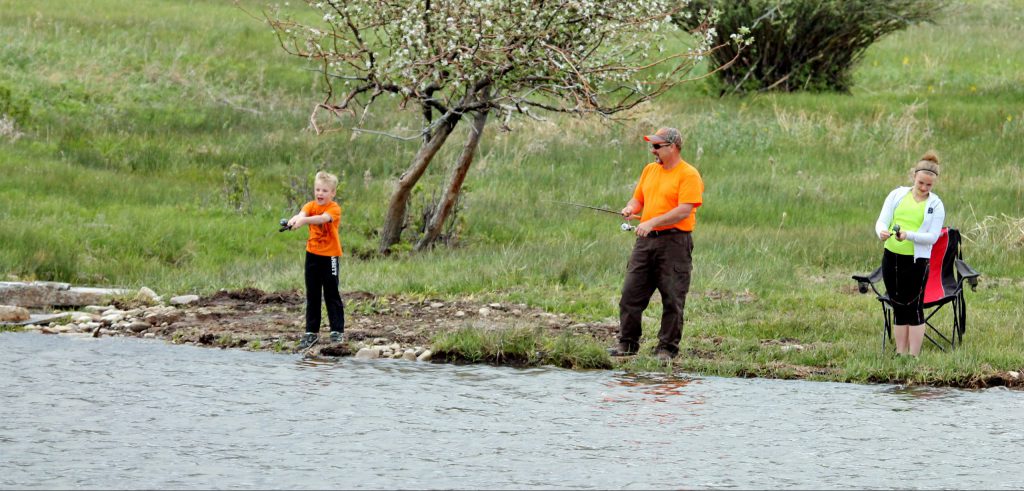
Loaner Fishing Rods
Idaho Department of Parks and Recreation (IDPR) and Idaho Department of Fish and Game (IDFG) are pleased to offer the State Park Fishing Equipment Loaner Program!
The program will increase awareness of the many fishing opportunities within Idaho’s state parks. With fishing locations at, or near, most parks, the agencies wanted to eliminate some of the barriers that might coincide with those interested in fishing—such as lack of equipment. Each of the participating parks will receive 16 rods and will have access to tackle and bait for park visitors.
There are currently 5 participating parks and we hope to have another 4 ready to go for the 2022 season!
Participants over the age of 14 will need a fishing license while using the loaner rods. Licenses can be purchased online, by phone, at any IDFG office, or at various convenience stores and outdoor retailers across the state—$11.50 for a daily pass or $30.50 for an annual license.
Best Parks for Enjoying Loaner Fishing Rods
Junior Ranger

Junior Ranger

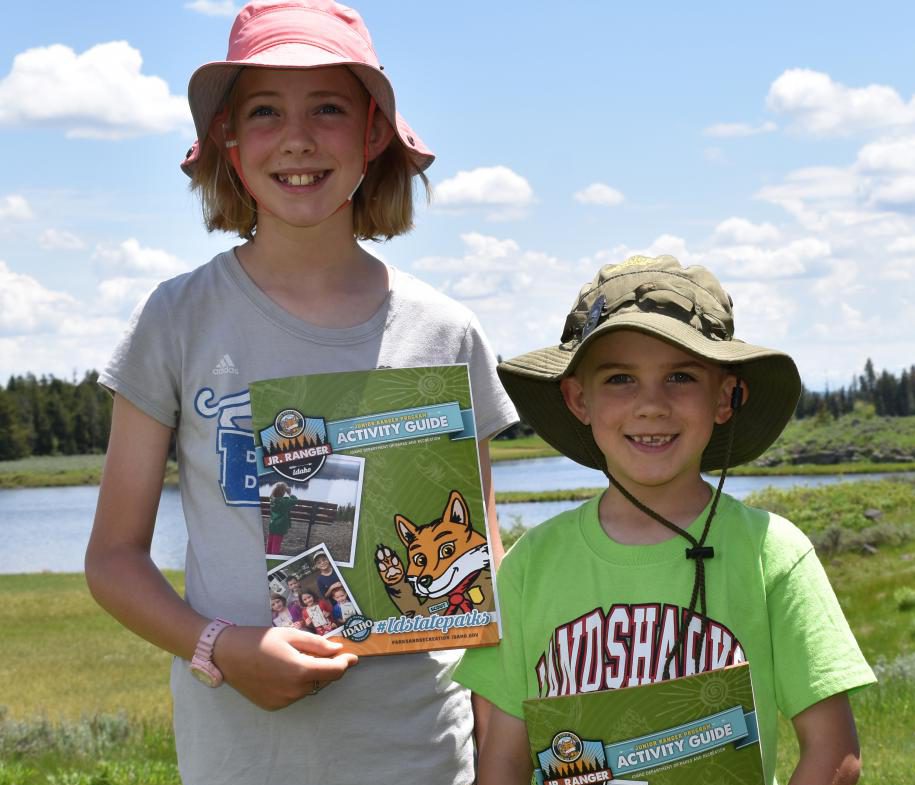
The Idaho Department of Parks and Recreation has many learning opportunities from campfire and Junior Ranger programs in our parks, to safety programs for motorized recreational activities.
Earn Your Junior Ranger Badge at the Park
Our goal is to help your children discover more about the outdoors while learning about our parks and making connections to the natural world. Here is how it works: pick up a Junior Ranger Guide at the park. When your child completes the required Junior Ranger activities for one of the participating parks in the program, they can receive the badge for that park. The program is designed for youth ages 6 to 12 but all are always welcome to participate, no matter the age! Attending a park presentation or taking a hike in a park are additional ways to earn your Junior Ranger certificate. We hope the discoveries your explorers experience in the program will encourage them to appreciate and protect Idaho’s natural and cultural resources. If you cannot visit the park, see below for the online digital version also available.
Earn Your Junior Ranger Badge Online
We have digital options available as well. It also can be a great activity either before or after visiting one of Idaho’s State Parks. Choose and complete at least three of these activities to earn a certificate for the park you select. Navigate to the “Portals to Parks for Junior Ranger” tab under the “About” tab.
Once you have completed three activities, download the Junior Ranger certificate for that park and fill in your name to recognize your completion.
Congratulations Junior Ranger, time to take the pledge!
Junior Ranger Pledge
I accept the challenge to become an Idaho State Parks Junior Ranger. I will discover more about and help protect Idaho’s parks and the natural world around me. I will share my discoveries with my friends and family.
Portals to Parks
Calling all Junior Rangers! Discover the flora, fauna, and history of Idaho state parks! Finish 3 activities to earn your certificate. Examples of activities include: completing the following activity sheets, watching a park video, taking a hike, or watching a ranger-lead presentation.
Click the titles below to download your activity sheets and start earning your Junior Ranger certificate!
Bruneau Dunes:
Castle Rocks/City of Rocks:
Harriman:
Hells Gate:
Lake Cascade:
Lake Walcott:
Lucky Peak:
Ponderosa:
- Wildlife Olympics
- Ponderosa Pine
- Scavenger Hunt for Younger Children (ages 6-7)
- Scavenger Hunt by Nature
- Fossil Activity
Additional Park Sheets:
- American Kestrel
- Bald Eagle
- Bobcat
- Eight-Spotted Skimmer
- Leave No Trace for Kids
- Mule Deer
- Maidenhair Fern
- Monarch Butterfly
- Mountain Bluebird
- Osprey
- Painted Lady Butterfly
- Red-tailed Hawk
- Song Sparrow
- The Western Grebe
- Western Tiger Swallowtail Butterfly
Certificates:
Finished 3 activities? Click 1 of the 22 participating park names below to download your digital Junior Ranger certificates! Congratulations!
- Bruneau Dunes State Park
- Castle Rocks/City of Rocks
- Coeur d’ Alene’s Old Mission State Park
- Dworshak State Park
- Eagle Island State Park
- Farragut State Park
- Harriman State Park
- Hells Gate State Park
- Henrys Lake State Park
- Heyburn State Park
- Lake Cascade State Park
- Lake Walcott State Park
- Land of Yankee Fork State Park
- Lucky Peak State Park
- Massacre Rocks State Park
- Ponderosa State Park
- Priest Lake State Park
- Round Lake State Park
- Thousand Springs State Park
- Three Island Crossing State Park
- Trail of the Coeur d’ Alenes
- Winchester Lake State Park
Best Parks for Enjoying Junior Ranger
Horseshoe Pits
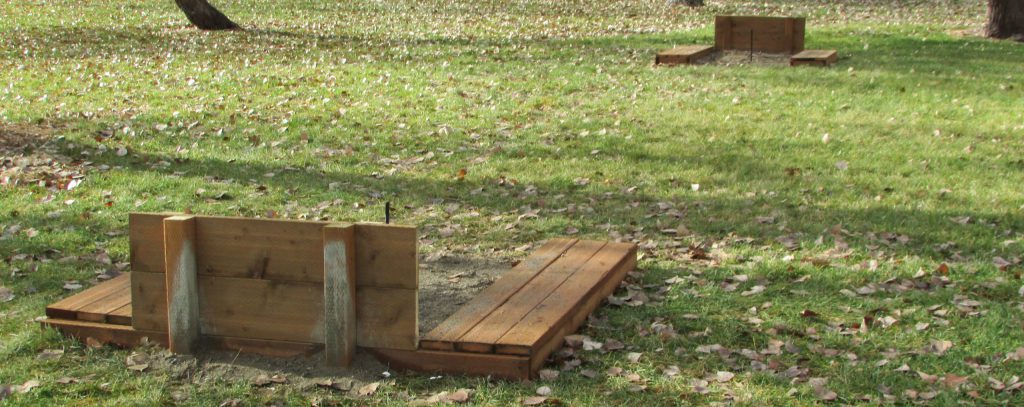
Horseshoe Pits
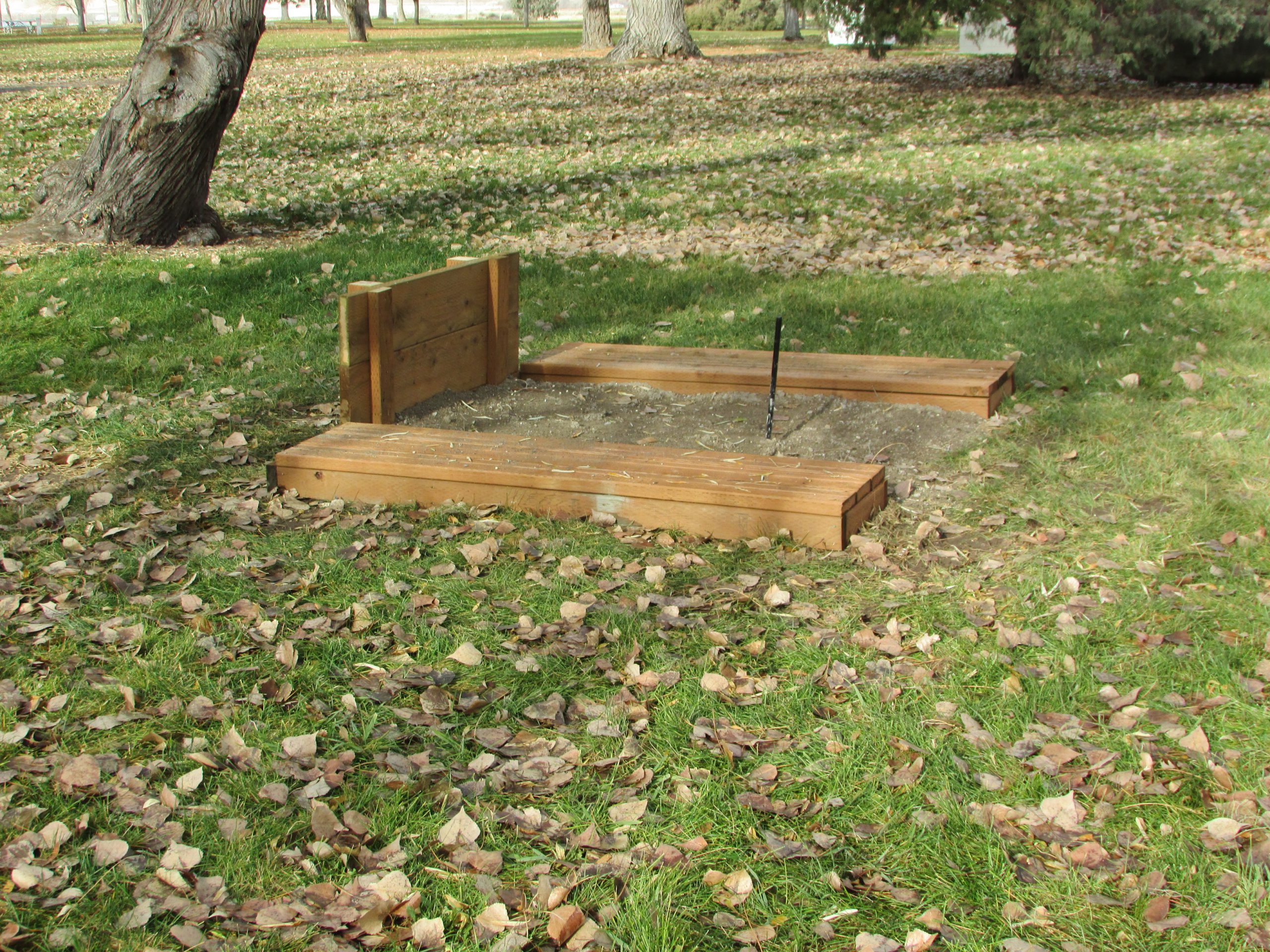
Horseshoe pits are a great way to enjoy Idaho’s state parks. Play alone or challenge family and friends to a classic game of horseshoes!
Best Parks for Enjoying Horseshoe Pits
Horseback
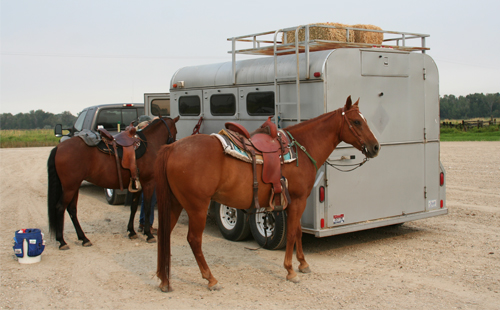
Horseback

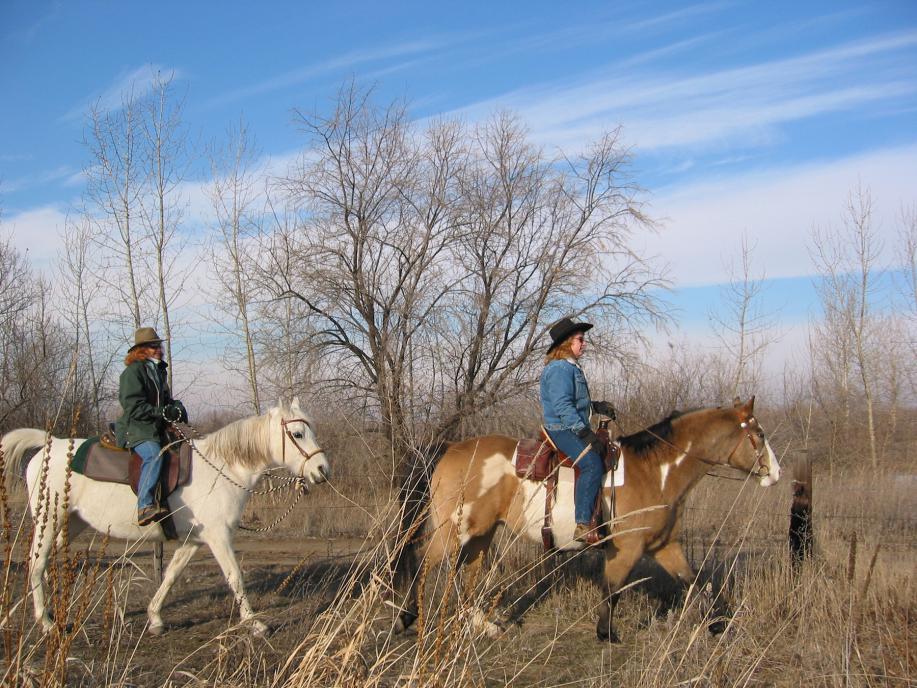
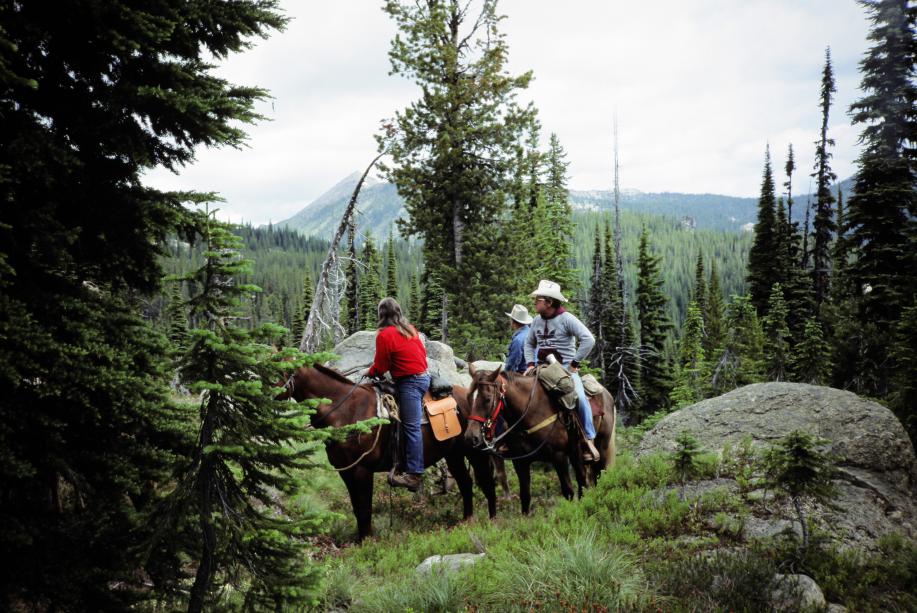
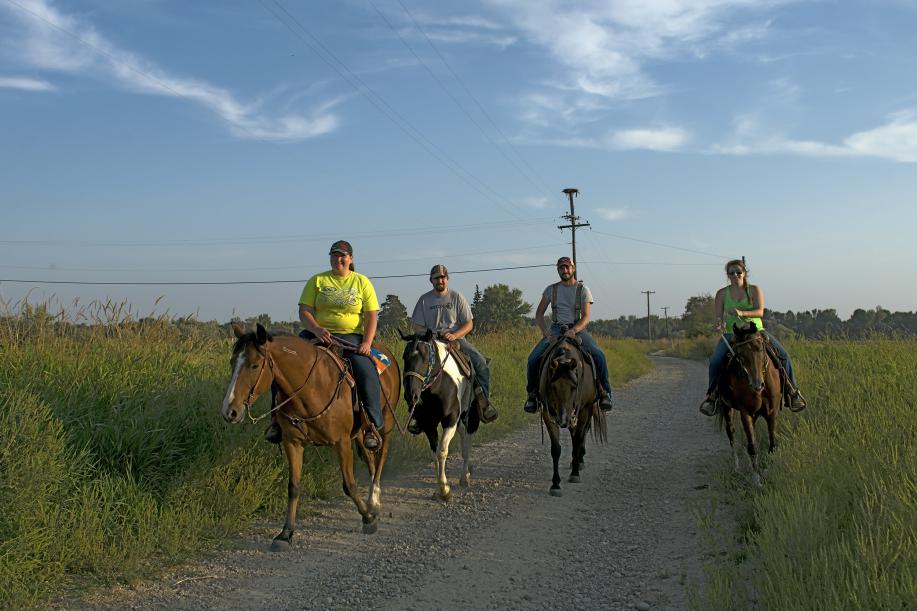
Horseback riders will enjoy the many trails and camping opportunities in Idaho state parks. Several parks have trails specially designed for horseback riding as well as camping places designed for horse travel and care. Every region of the state offers a state park with something special for horse riding enthusiasts. Most parks overnight camping and accommodations. Farragut offers overnight accommodations specially designed for horses.
Harriman Horseback Information
For horseback riding opportunities at Harriman State Park, contact Dry Ridge Outfitters at 208-558-7433. Please can call direct to make reservations or get more information or to make reservations. Visitors much pay an entrance fee $7 if they do not have a state park pass. The Stables are up at the Ranchview Pavillion parking lot.
Note: Please do not use Google or other online map directions to get to Dry Ridge Outfitters. Online mapping systems route you incorrectly through the park. For the most accurate and efficient directions to your horse ride, please enter Harriman State Park through the main park entrance; pay your required entrance fee at the kiosk; and from there follow posted signage to the Ranchview parking lot. This will be the quickest and easiest way to get to your horse ride.
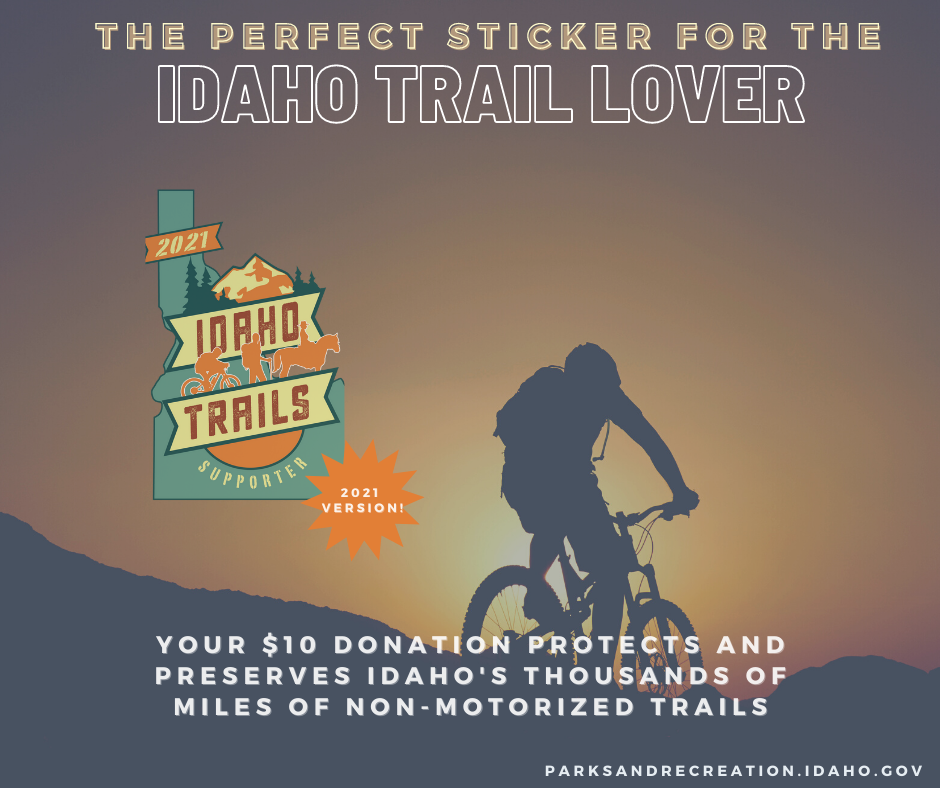
You can purchase an Idaho Trails Supporter Sticker at most IDPR offices and state parks across Idaho!
THE WHY
Trails provide access to Idaho. Trails are part of Idaho’s recreation heritage, providing paths to camping, fishing and the wild places that make the Gem State great. We already have one of the most effective motorized trail maintenance programs in the country, supported by user fees. But the needed resources to maintain trails for hiking, biking and horse riding are lacking. And without adequate maintenance and improvements, access to some non-motorized trails will be lost.
GOAL
Create an organized approach to address priority access and maintenance needs on Idaho’s 10,000 miles of hiking, biking, and equestrian trails.
PROGRAM
- Annual minimum donation of $10
- Contributor receives the sticker, updated yearly, showing their support for Idaho Trails
- The Trails Supporter funds will be managed by the Idaho Department of Parks and Recreation and used for priority projects identified by partner groups and the public
- IDPR will work with partners to ensure needed projects are completed, with an emphasis on signage and trail clearing
Best Parks for Enjoying Horseback
History
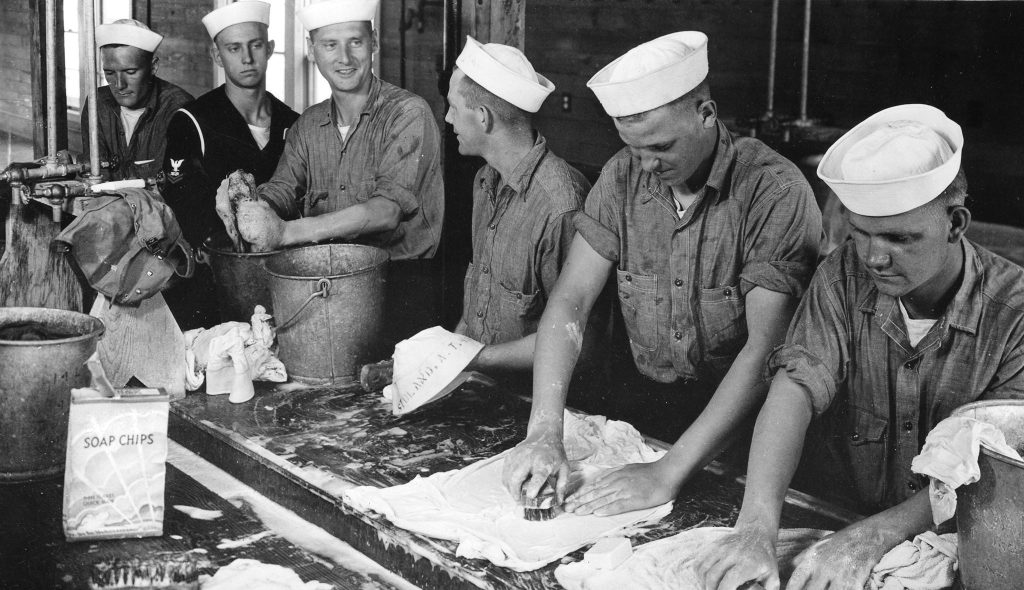
History
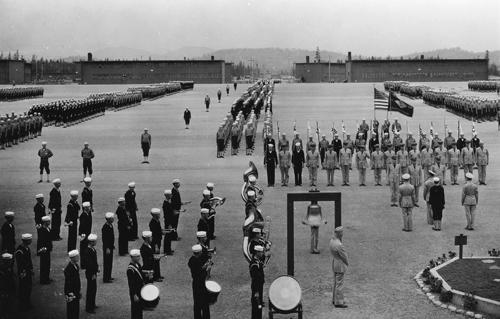
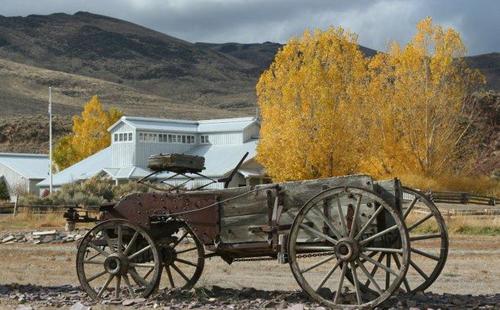
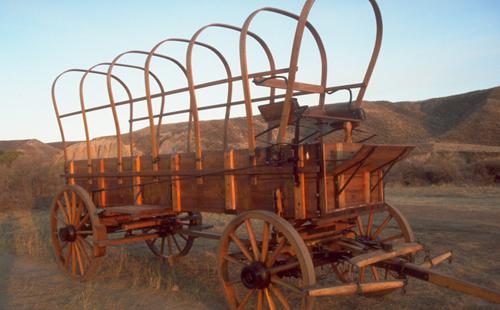
If you’re interested in history, several Idaho State Parks offer fascinating glimpses into our ancient and recent past. Whether the subject is Native Americans, the Oregon Trail and early pioneers, World War II and Nazi prisoners of war, Idaho history or even ghost towns, Idaho State Parks will engage and enlighten you.
| Park | Historical significance | Overnight |
|---|---|---|
| Farragut State Park | Largest World War II Naval base and Nazi POW camp, museum and interpretive areas | yes |
| Coeur d’ Alene’s Old Mission State Park | World class history museum – Sacred Encounters; Coeur d’Alene tribal history; Idaho’s oldest building | no |
| Castle Rocks State Park | Native American gathering place; Idaho ranching history | yes |
| City of Rocks National Reserve | Emigrant wagon trail; Native American gathering place | no |
| Harriman State Park | Early Idaho ranching | yes |
| Hells Gate State Park | Nez Perce village | yes |
| Heyburn State Park | Oldest state park in Idaho; Civilian Conservation Corps buildings | yes |
| Land of the Yankee Fork State Park | Early Idaho mining; ghost towns; museum | no |
| Massacre Rocks State Park | Emigrant trail and Native Amercian conflicts; Register Rock with historic and interpretive areas nearby | yes |
| Thousand Springs State Park | Geologic interpretive area; early Idaho agriculture; dairy, Oregon Trail | no |
| Three Island Crossing State Park | Oregon Trail river crossing site; with Oregon Trail education center | yes |
Best Parks for Enjoying History
Hiking
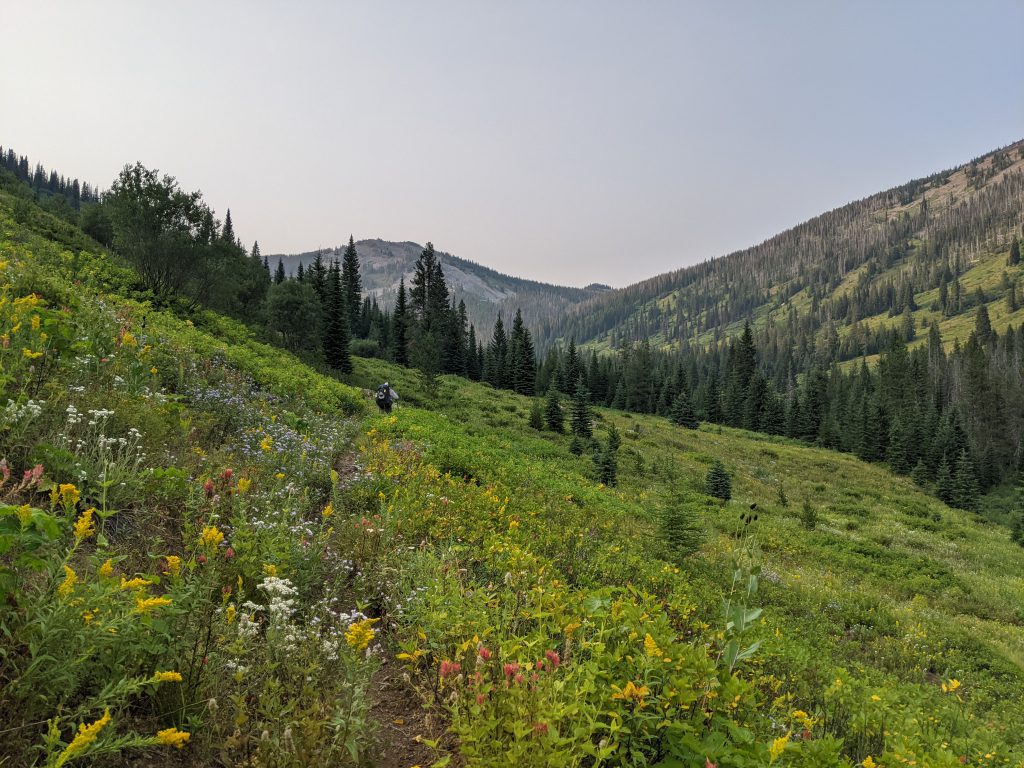
Hiking
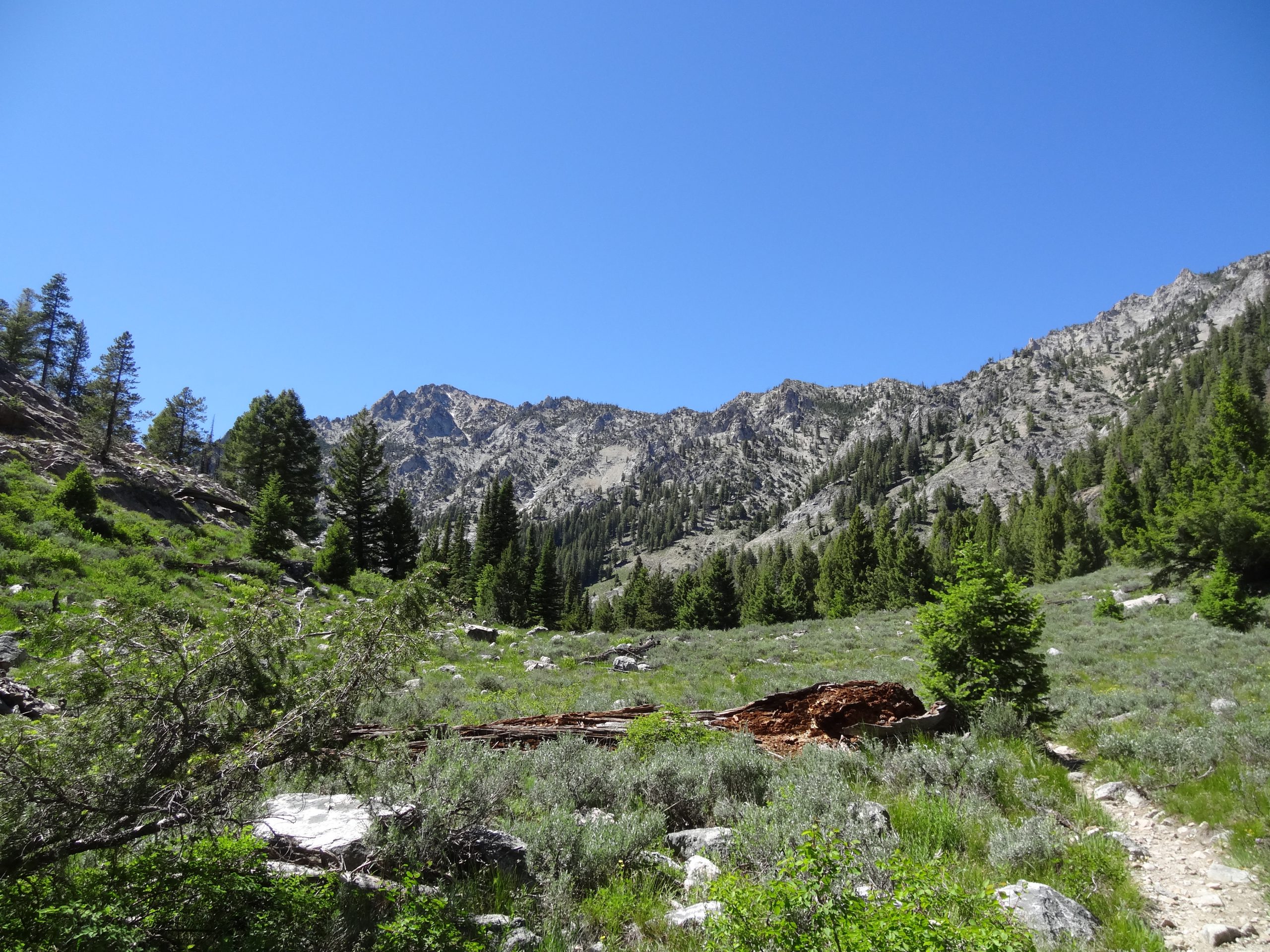
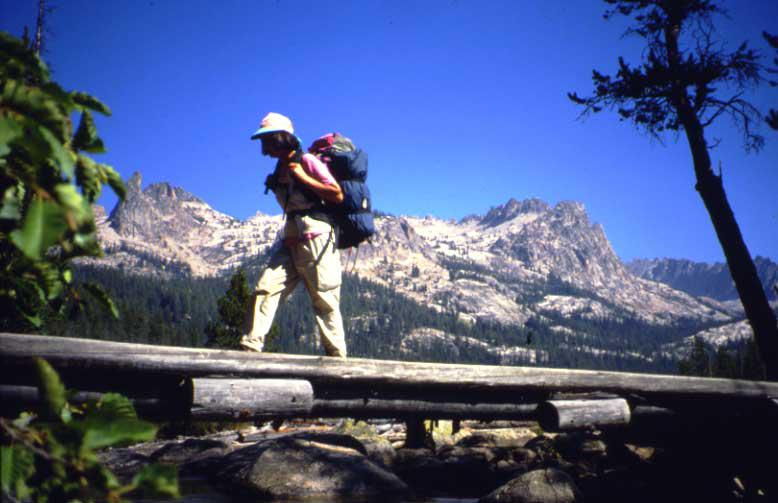
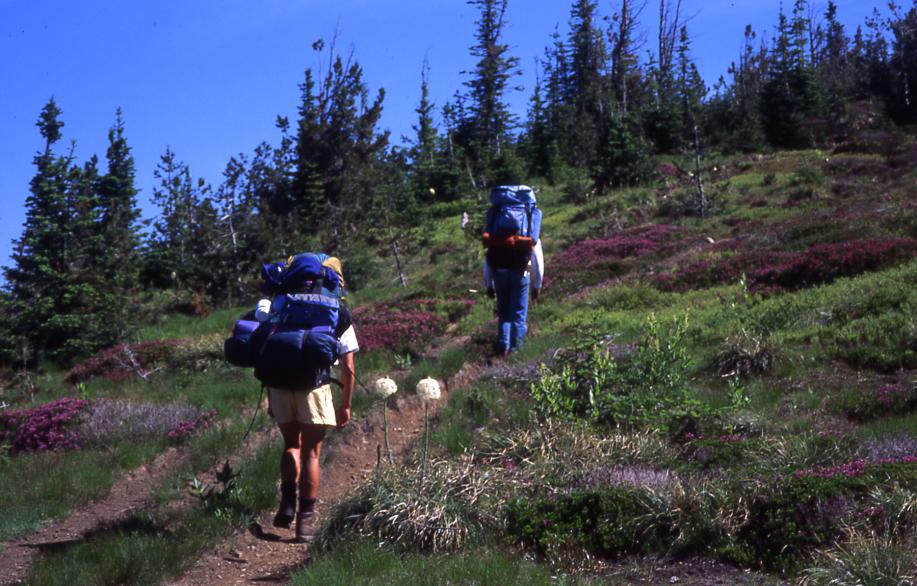
Where to Hike
Two versions of the Idaho Trails App cover all devices:
Advanced is full-featured, usable on PCs, iOS devices, plus Android devices with extended capabilities.
Mobile is configured to function on Android devices of all capabilities.
Users should try the Advanced version first. If a blank screen is encountered when zooming the map in, tap the Go to Mobile App button to switch to the Mobile version.
Please provide feedback here if you encounter any issues with app function.
Idaho Road Conditions
For the latest road conditions, visit the Idaho 511 map managed by the Idaho Department of Transportation.

Hiking on Rangeland
Idaho’s public lands allow for many uses, including ranching. To learn how to recreate responsibly around livestock on public land, please read these ten tips and visit the Idaho Rangeland Resources Commission website.
Idaho Trails Supporter Sticker
Want to support Non-Motorized Trails in Idaho? Purchase an Idaho Trails Supporter Sticker. Trails provide access to Idaho. IDPR already has one of the most effective motorized trail maintenance programs in the country, supported by user fees. But the needed resources to maintain trails for hiking, biking, and stock users are lacking. Without adequate maintenance and improvements, access to some non-motorized trails will be lost.

Idaho summers are often characterized by wildfires and poor air quality. There are several resources you can use to find places to recreate safely and determine whether it is safe to have a campfire.
- Check air quality information from the Idaho Department of Environmental Quality.
- Check for local burn bans from the Idaho Department of Environmental Quality.
- Check for fire restrictions from the Idaho Department of Lands.
- Check for active wildfires from the Idaho Department of Fish and Game.
- Stay off muddy trails. Using trails while they are muddy damages the tread and can result in unsafe conditions for future users.
- Stay on designated trails. Taking shortcuts or using unofficial trails leads to excess resource damage.
- Ride on the proper trails designated for your use type. Do your research ahead of time (check out the Idaho Trails Map!) so you know where to go.
- Share the trails. Be prepared to encounter others on the trail – whether it be walkers, mountain bikers, runners, stock users, or off-highway vehicle users.
- Mountain bikers should yield to foot-traffic and stock users. Foot-traffic should yield to stock users.
- Motorized users should yield to non-motorized users.
- When approaching stock users, remove your helmet, get to the downhill side of the trail if possible, and speak calmly to let the stock know you’re human.
- Be kind, courteous, and respectful. Remember, we are all out on the trails to have a good time. BE a good trail ambassador and go out of your way to be courteous to others.
- Do your best to Leave No Trace.
The 995.6-mile Idaho Centennial Trail weaves through some of the most scenic portions of Idaho’s wild country, from high desert canyonlands in southern Idaho to wet mountain forests in northern Idaho. The entirety of the Idaho Centennial Trail can be utilized by thru-hikers, backpackers, day hikers, and stock users. Some sections can be accessed by off-highway vehicles and mountain bikes.

Designated the official state trail during Idaho’s Centennial year in 1990, the southern portion of the trail begins at 6,000 feet near Murphy Hot Springs on the Idaho/Nevada border. Heading north, the trail descends to 2,500 feet at the Snake River near Glenns Ferry. The trail yo-yos up and down through the mountains of Central Idaho between 3,000 and 9,000 feet. At its low point (1,900 feet above sea level) the trail skirts the Selway River near the Moose Creek Guard Station then climbs again to high points up to 6,000 feet in the Cabinet and Selkirk Mountains as the trail approaches the northern boundary.
The ICT crosses three historic trails along its route: the Oregon Trail near the Snake River, the Lewis and Clark Trail (on the north ridge above the Lochsa River) and the alternative route crosses the Nez Perce Trail. Those who travel the entire length of the trail will cross through 11 national forests and about 100 miles of Bureau of Land Management land in the high desert.
Three wilderness areas can be explored on the trail: the Sawtooth Wilderness, the Frank Church-River of No Return Wilderness and the Selway-Bitterroot Wilderness for a distance of more 300 miles. The trail also courses along the famed Middle Fork of the Salmon River (if you like to fish, you’ve got to bring your fishing pole) and the Selway, both of which were among the original eight National Wild and Scenic Rivers because of their purity, beauty and wild character (no dams from source to mouth). North of the Selway-Bitterroot, the trail hop-scotches along the Idaho-Montana border on the backbone of the Bitterroot Mountains for more than 85 miles on high ridges. Dozens of high mountain lakes along this portion of the route will beckon the hard-core angler. There is also an alternative route available that skirts the wilderness areas.
The Idaho Centennial Trail passes through some of Idaho’s most spectacular country. The route traverses a variety of terrain including sagebrush desert, flower-filled alpine meadows, dense cedar forests, six major river canyons and numerous crystal clear mountain takes. Many unique geological formations, such as caves and hot springs, can also be seen from the trail. Along the way you will find Idaho as it was 100 years ago. Abandoned homesteads and cabins, old mines, logging camps and a restored, old time ranger station are many of the interesting sites along the route.
The Centennial Trail primarily crosses public land, but there are small segments of private land along the way. Permission to cross or camp on private land must be obtained from the land owner. The trail is cooperatively managed by the Idaho Department of Parks and Recreation, which provides overall trail coordination; the Bureau of Land Management, which manages of southern section of trail; and the U. S. Forest Service, which manages the middle and northern sections of the trail and private and other public land agencies allow trail users to cross their property for continuity.
More Information
- To learn more about the Idaho Centennial Trail, check out The Hiker’s Guide: Idaho Centennial Trail by Lisa and Jeremy Johnson. It is the most comprehensive resource for anyone interested in exploring the trail.
- View an interactive topographical map
- View a downloadable trail overview map that includes contact information for US Forest Service and BLM offices along the way
- Download .zip file with GPS coordinates
- Download a .pdf with detailed information about the trail (signage, wildlife, access issues, re-supply points, history and more)
- Idaho Centennial Trail blog with lots of information including updates from current ICT hikers
- Idaho Public Television piece about the Centennial Trail
For more information, contact inquiry@idpr.idaho.gov
More than 60% of Idaho is public and managed by the US Forest Service and Federal Bureau of Management. There are trails for everyone whether you’re looking for a short hike for the whole family or a once-in-a-lifetime hiking experience.
Click below to find information about hiking on federal land:
- Boise National Forest
- Payette National Forest
- Sawtooth National Forest
- Caribou-Targhee National Forest
- Salmon-Challis National Forest
- Nez Perce – Clearwater National Forests
- Idaho Panhandle National Forests
- Sawtooth National Recreation Area
- Continental Divide National Scenic Trail
- Pacific Northwest National Scenic Trail
- Hells Canyon National Recreation Area
- Hagerman Fossil Beds National Monument
- Craters of the Moon National Monument and Preserve
- Ice Age Floods National Geologic Trail
- California National Historic Trail
- Lewis and Clark National Historic Trail
- Nez Perce (Nee-Me-Poo) National Historic Trail
- Oregon National Historic Trail
- Idaho National Recreation Trails
- Idaho Bureau of Land Management
The Wilderness Act of 1964 defines Wilderness as “an area where the earth and its community of life are untrammeled by man, where man himself is a visitor who does not remain.” Wilderness areas are limited to non-mechanized users. Recreational use is limited to foot traffic, stock users, and wheelchair users.
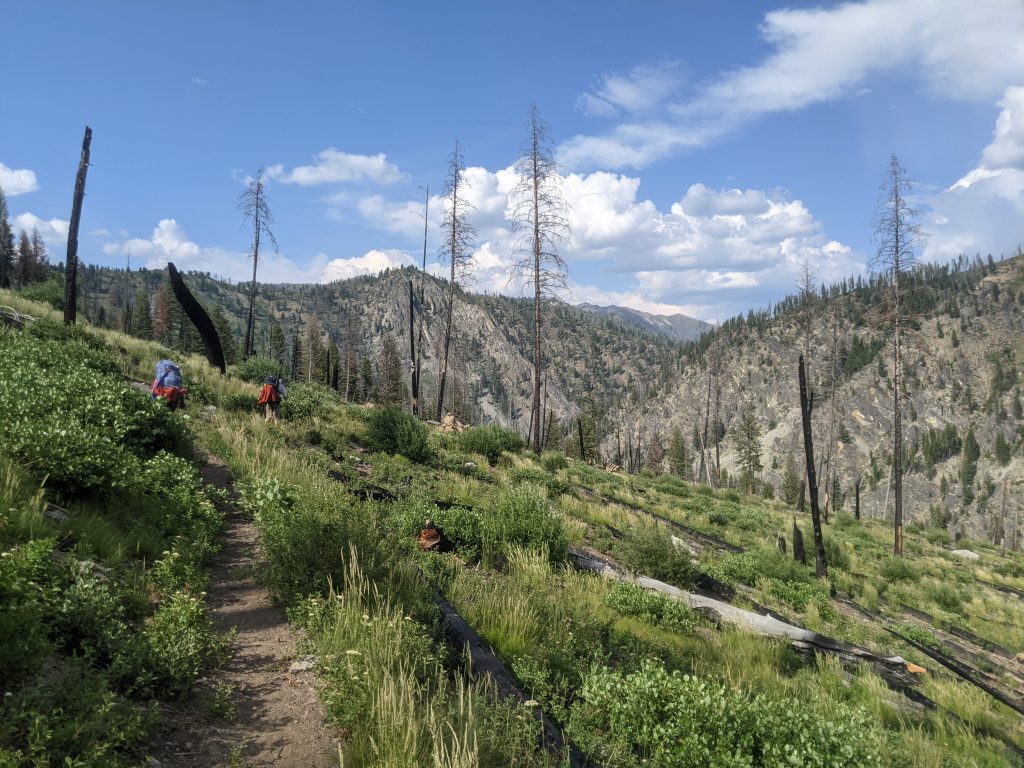

You can purchase an Idaho Trails Supporter Sticker at most IDPR offices and state parks across Idaho!
THE WHY
Trails provide access to Idaho. Trails are part of Idaho’s recreation heritage, providing paths to camping, fishing and the wild places that make the Gem State great. We already have one of the most effective motorized trail maintenance programs in the country, supported by user fees. But the needed resources to maintain trails for hiking, biking and horse riding are lacking. And without adequate maintenance and improvements, access to some non-motorized trails will be lost.
GOAL
Create an organized approach to address priority access and maintenance needs on Idaho’s 10,000 miles of hiking, biking, and equestrian trails.
PROGRAM
- Annual minimum donation of $10
- Contributor receives the sticker, updated yearly, showing their support for Idaho Trails
- The Trails Supporter funds will be managed by the Idaho Department of Parks and Recreation and used for priority projects identified by partner groups and the public
- IDPR will work with partners to ensure needed projects are completed, with an emphasis on signage and trail clearing
The Idaho Department of Parks and Recreation (IDPR) hosted three (3) summits to discuss issues and solutions pertaining to non-motorized trail recreation in Idaho. The discussions were held in Boise, Coeur d’Alene and Idaho Falls. Below are the meeting handouts and minutes from each location. The open discussions explored all topics pertaining to non-motorized trail recreation in Idaho and ideas for solving the non-motorized trail funding gap.
Boise – February 11, 2016
Coeur d’Alene – April 21, 2016
Idaho Falls – May 2, 2016
Boise, January 11, 2017
A meeting was held January 11, 2017 to share results of the 2016 summits and to organize a leadership team, willing to take suggestions and strategies through the next very important steps. Download the meeting materials.
Summit Attendees
A complete list of summit attendees is available for download here.
Next Steps – Use collective report and results from statewide summits to answer the following:
- Is there a need to address non-motorized trail maintenance in Idaho?
- Is there enough support statewide to address non-motorized trail maintenance and related funding in Idaho?
- Who will work together to address the need?
- What does addressing the need look like?
- What are the necessary actions / future next steps?
Want to take a leadership role? Have questions?
If you have questions, would like to lead in next steps, or were unable to attend a summit in your area, you can share your thoughts and ideas via email: inquiry@idpr.idaho.gov

